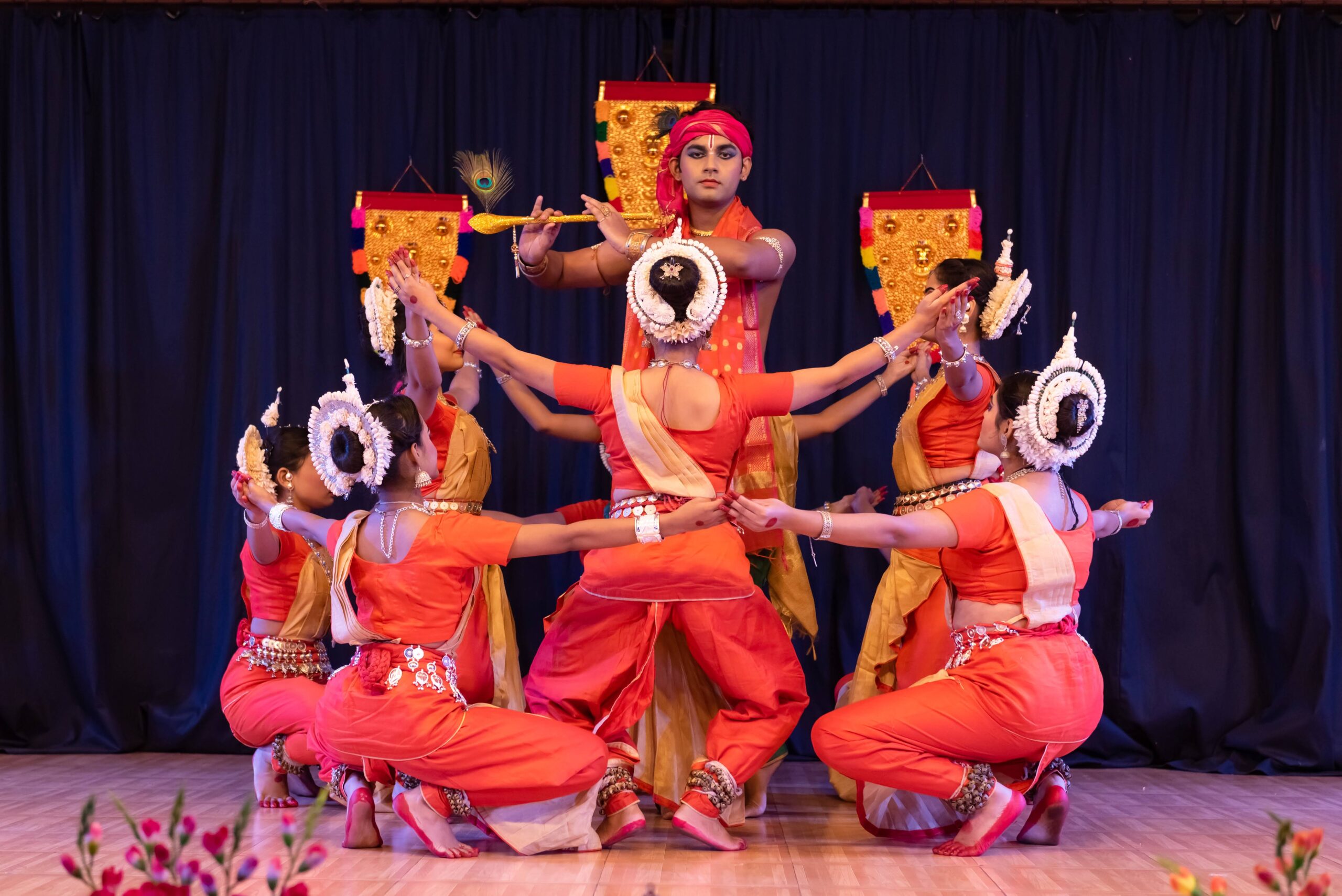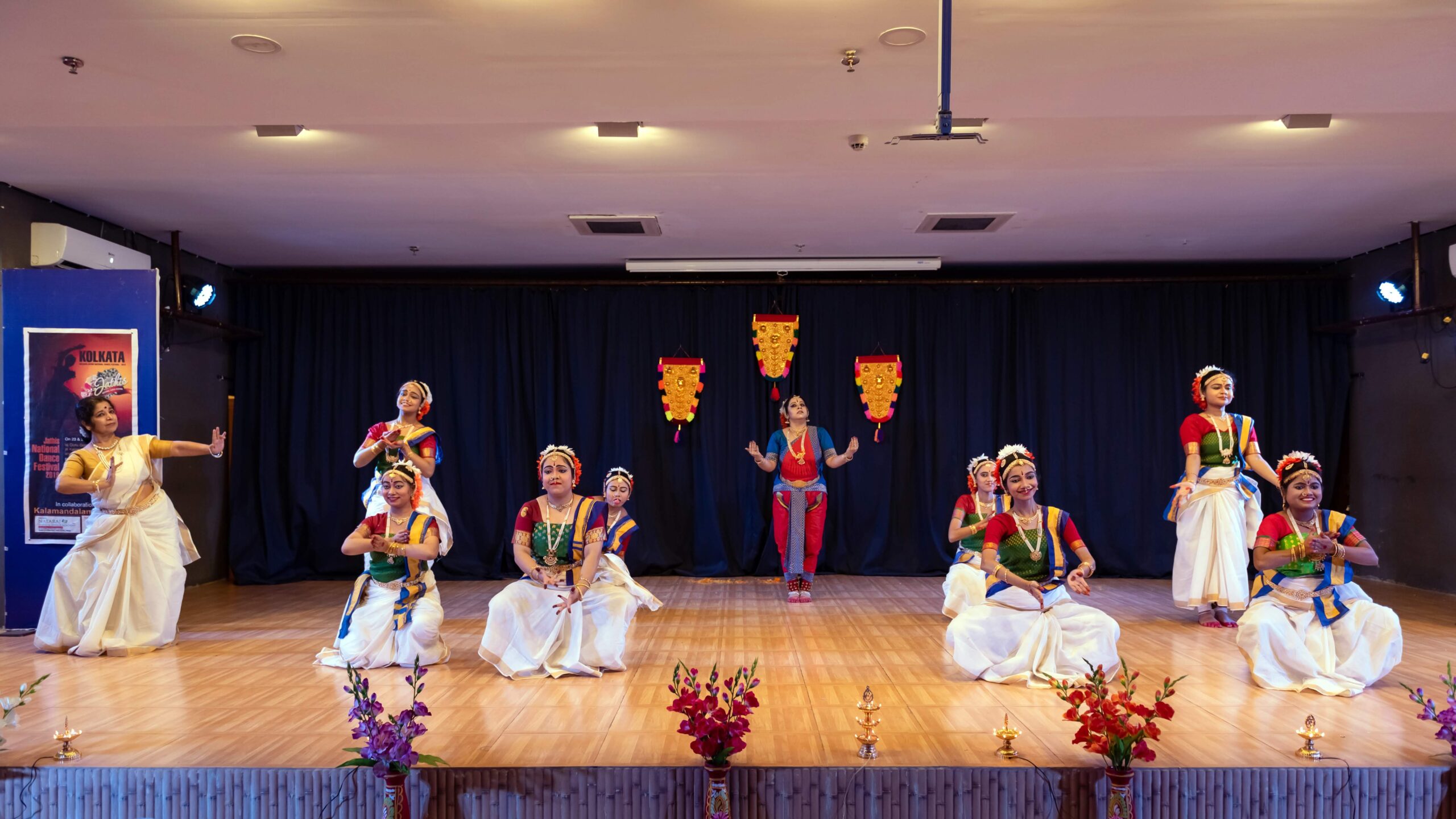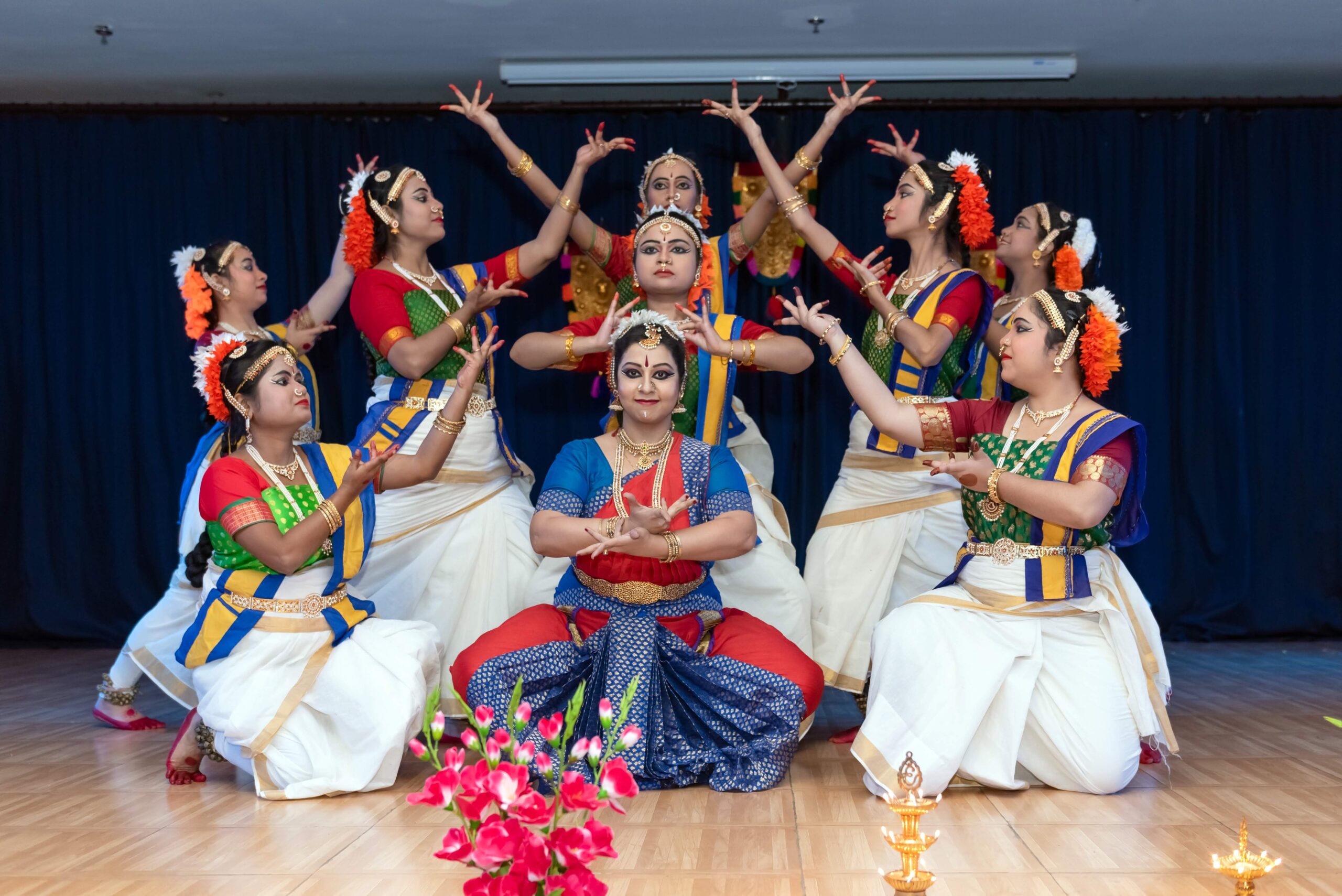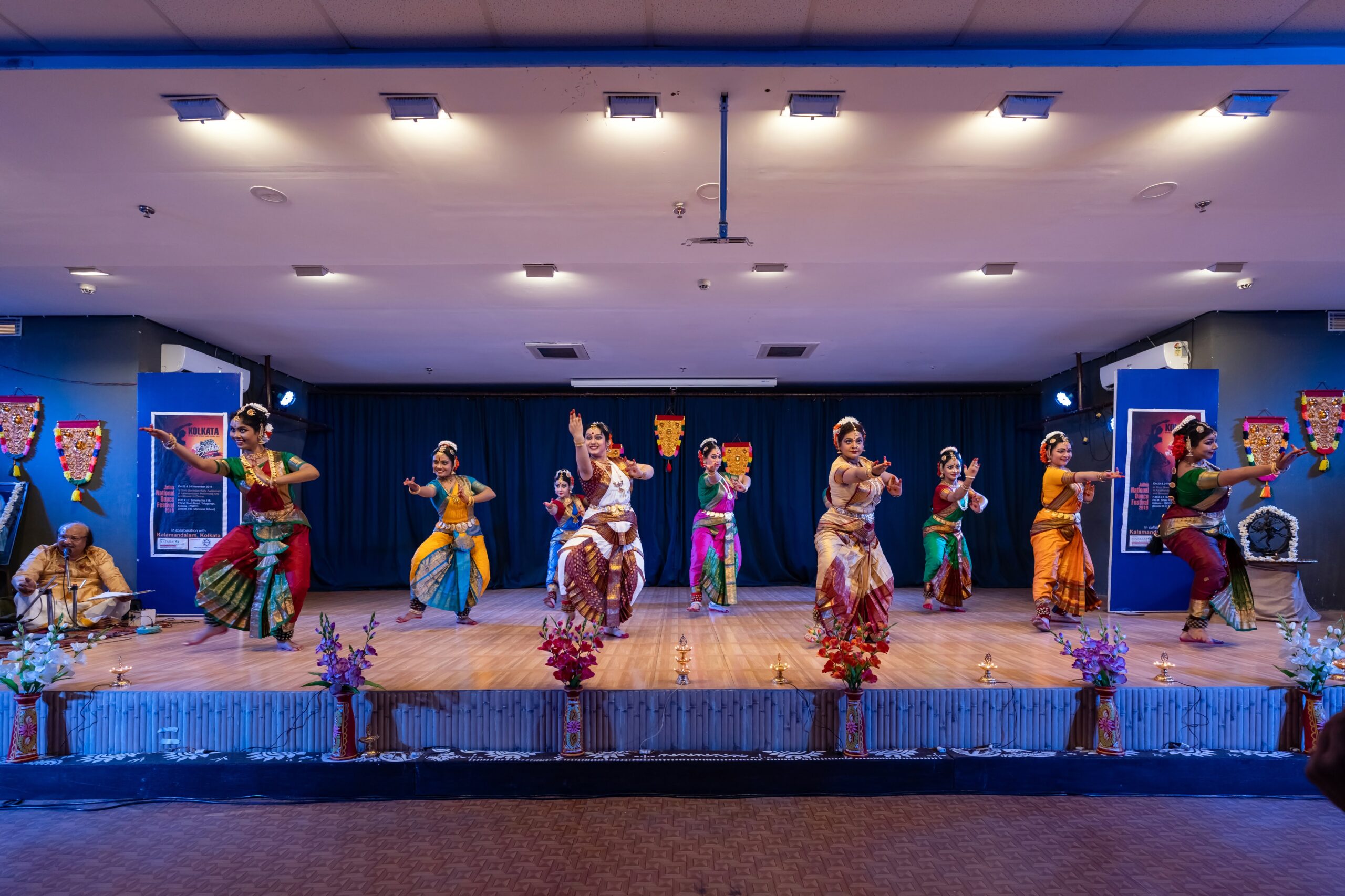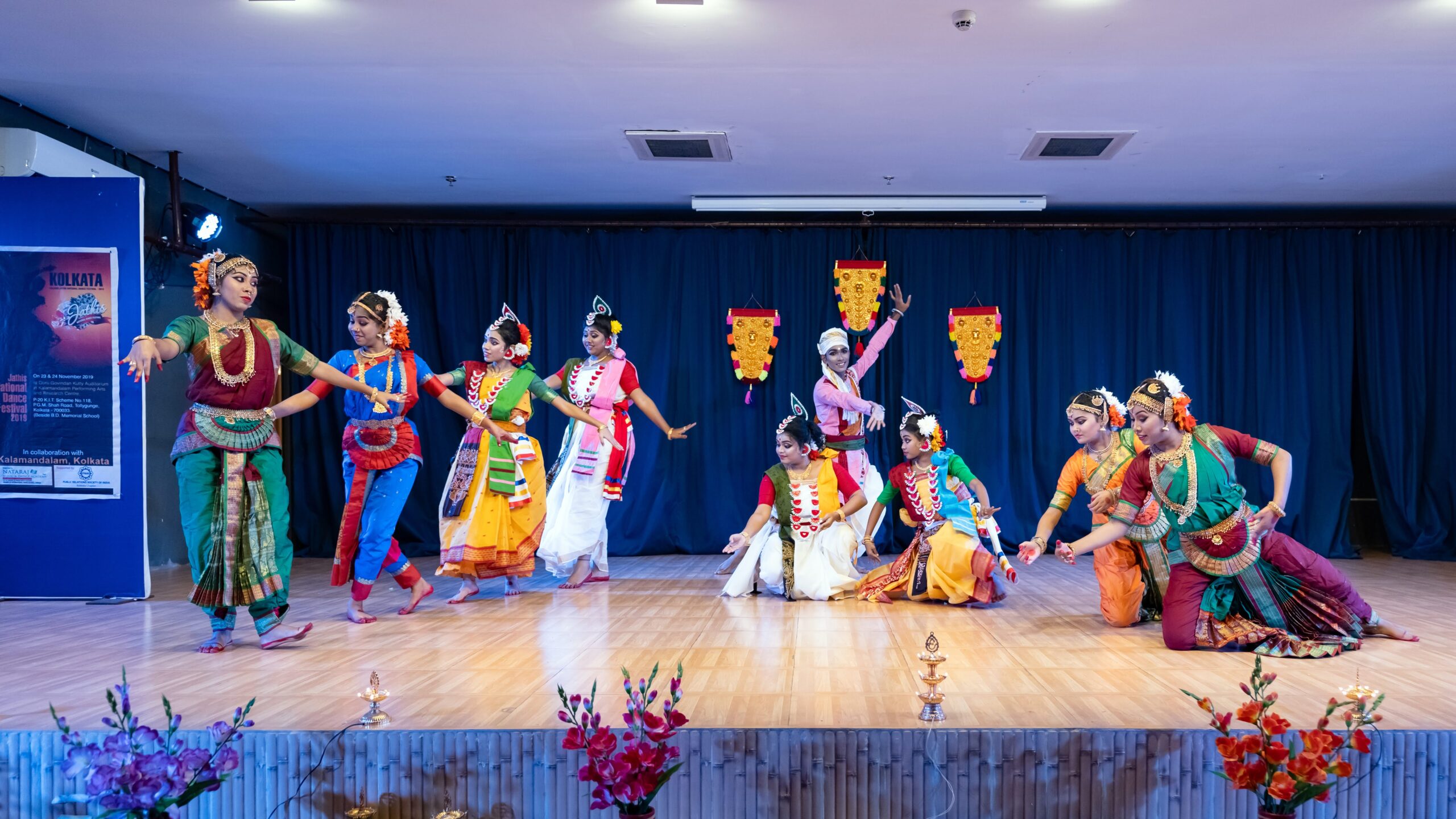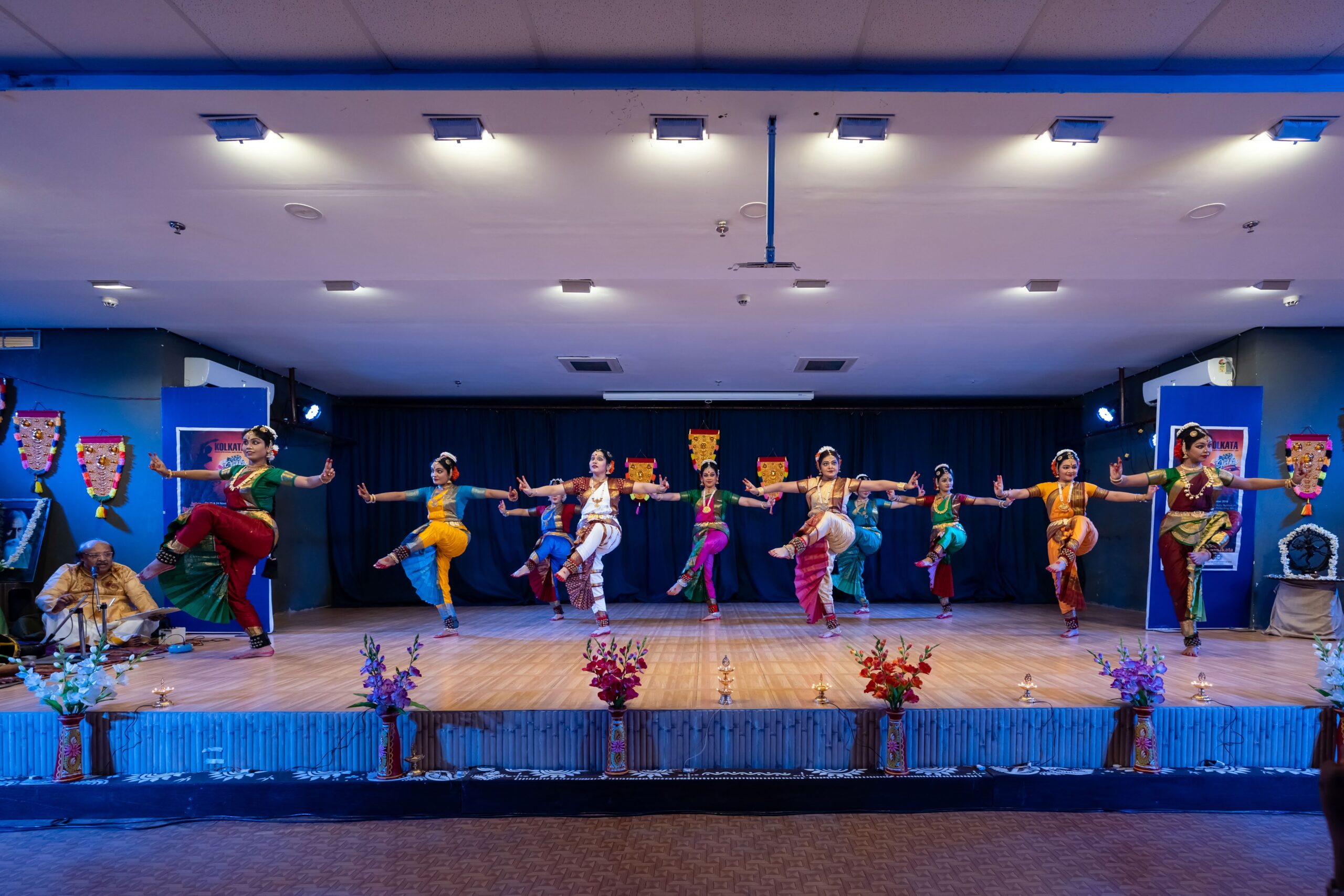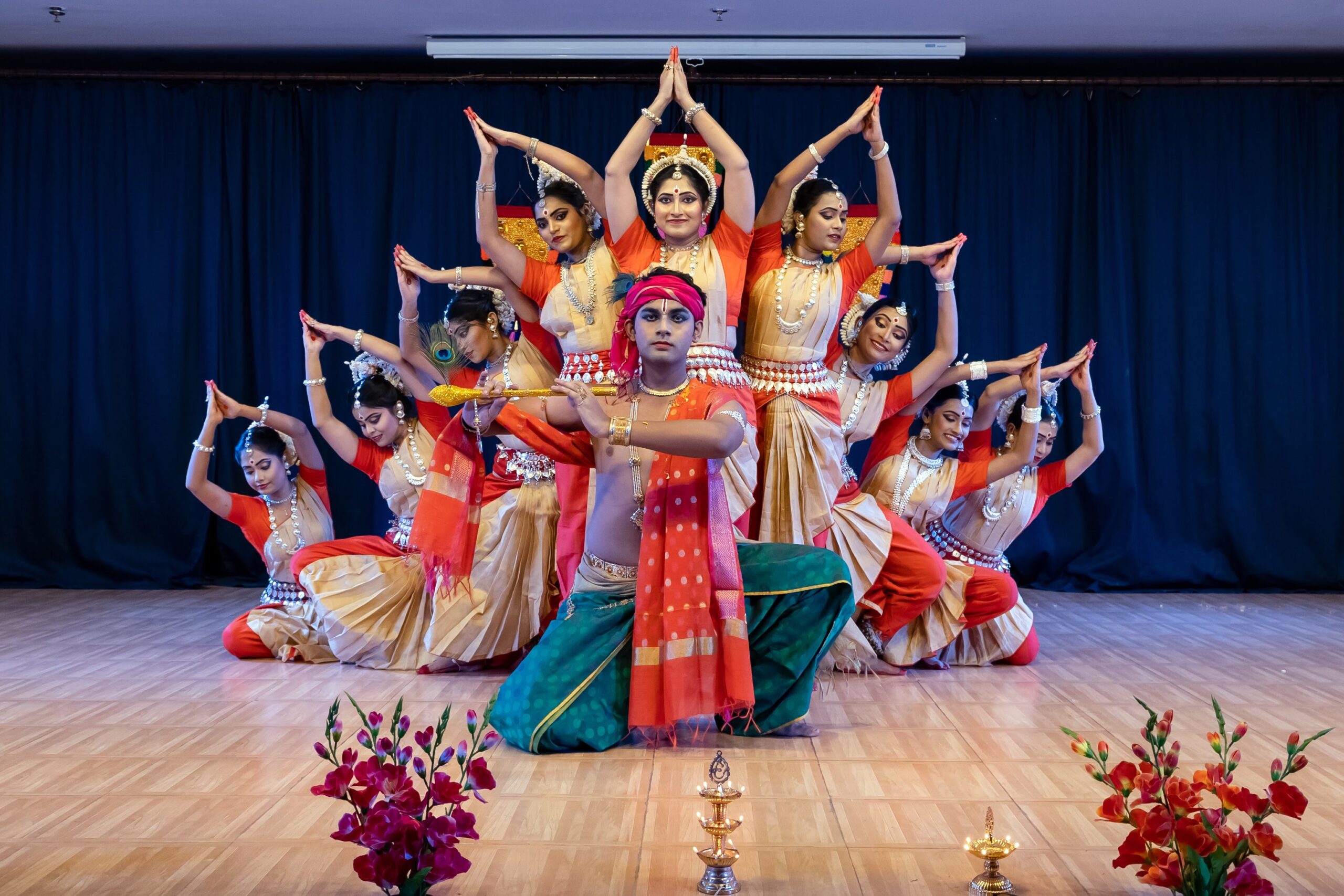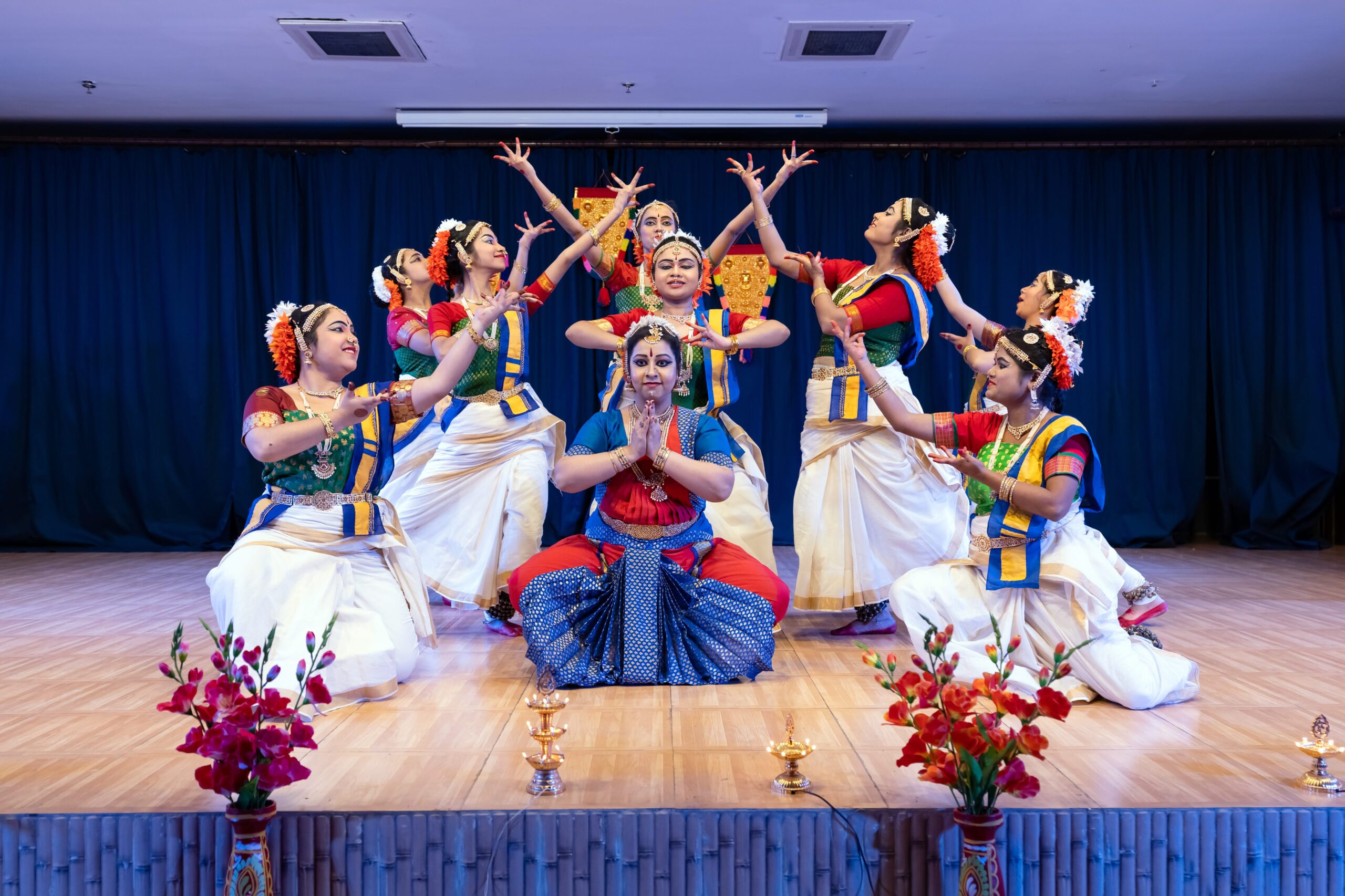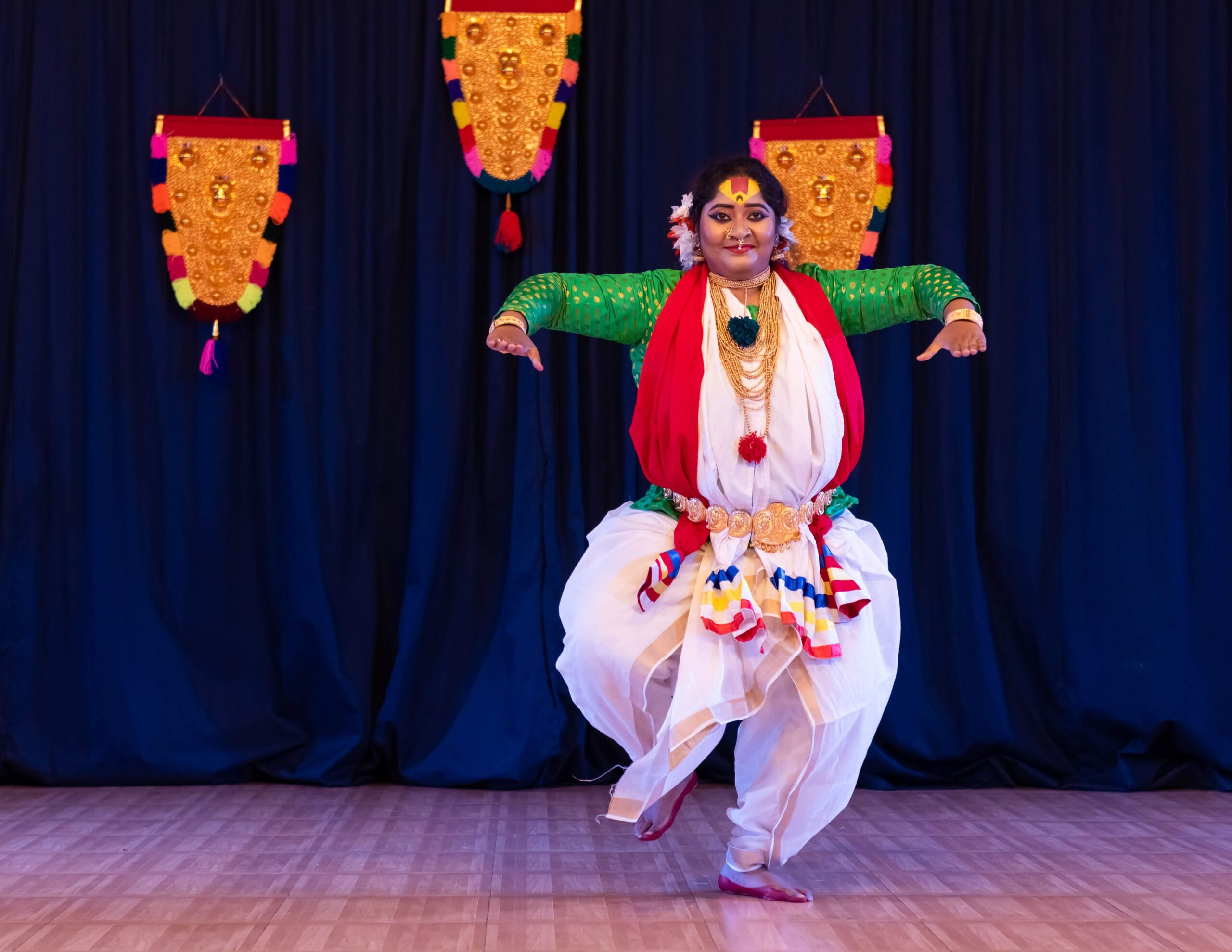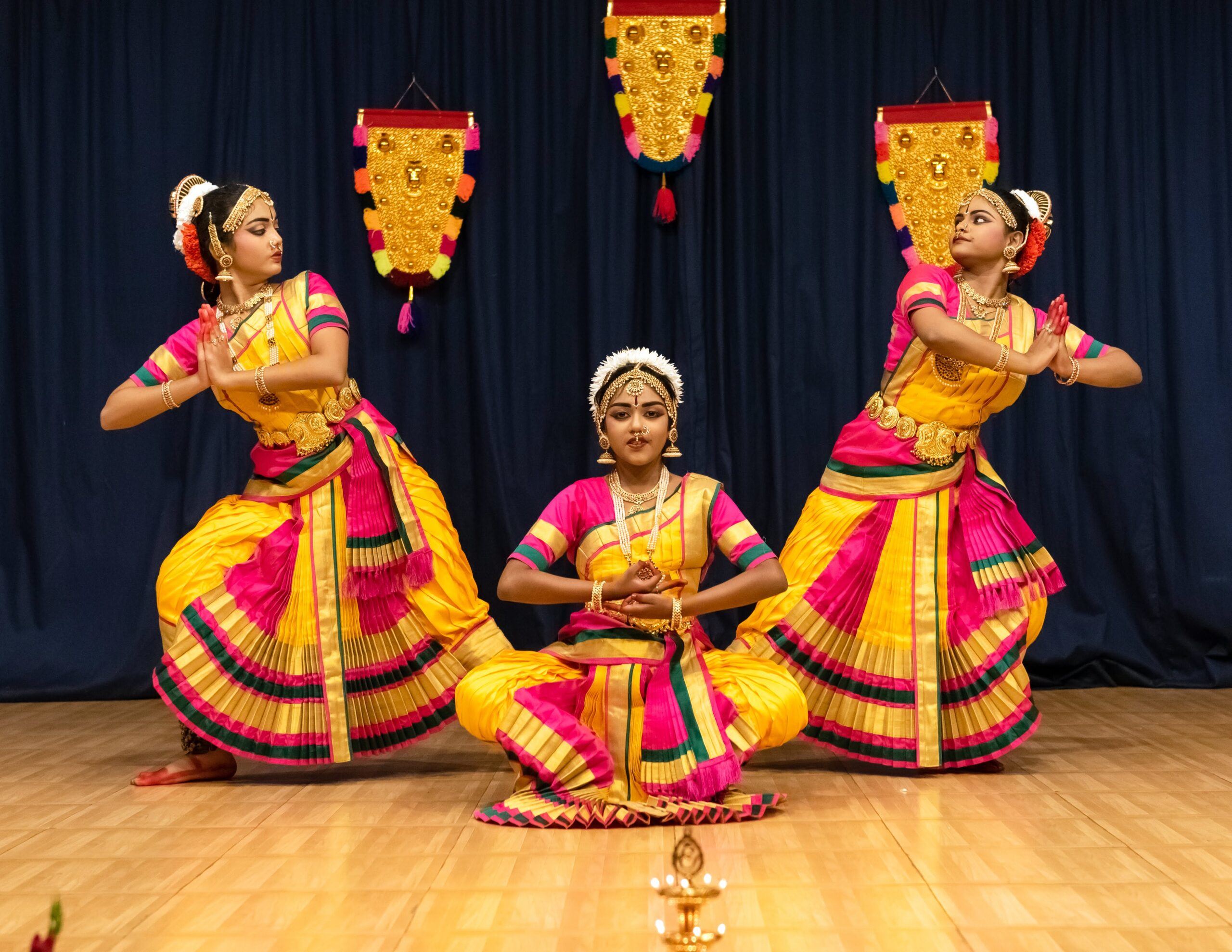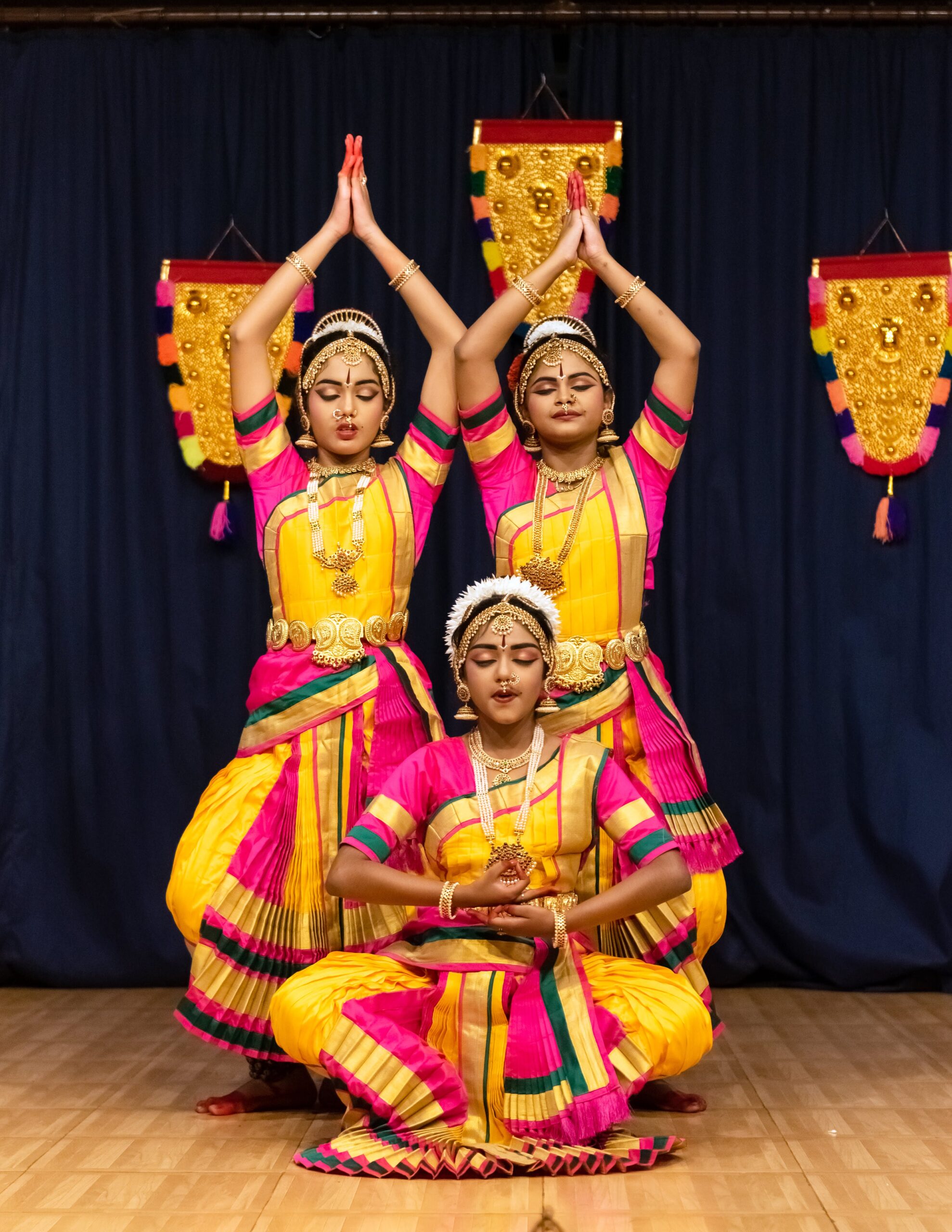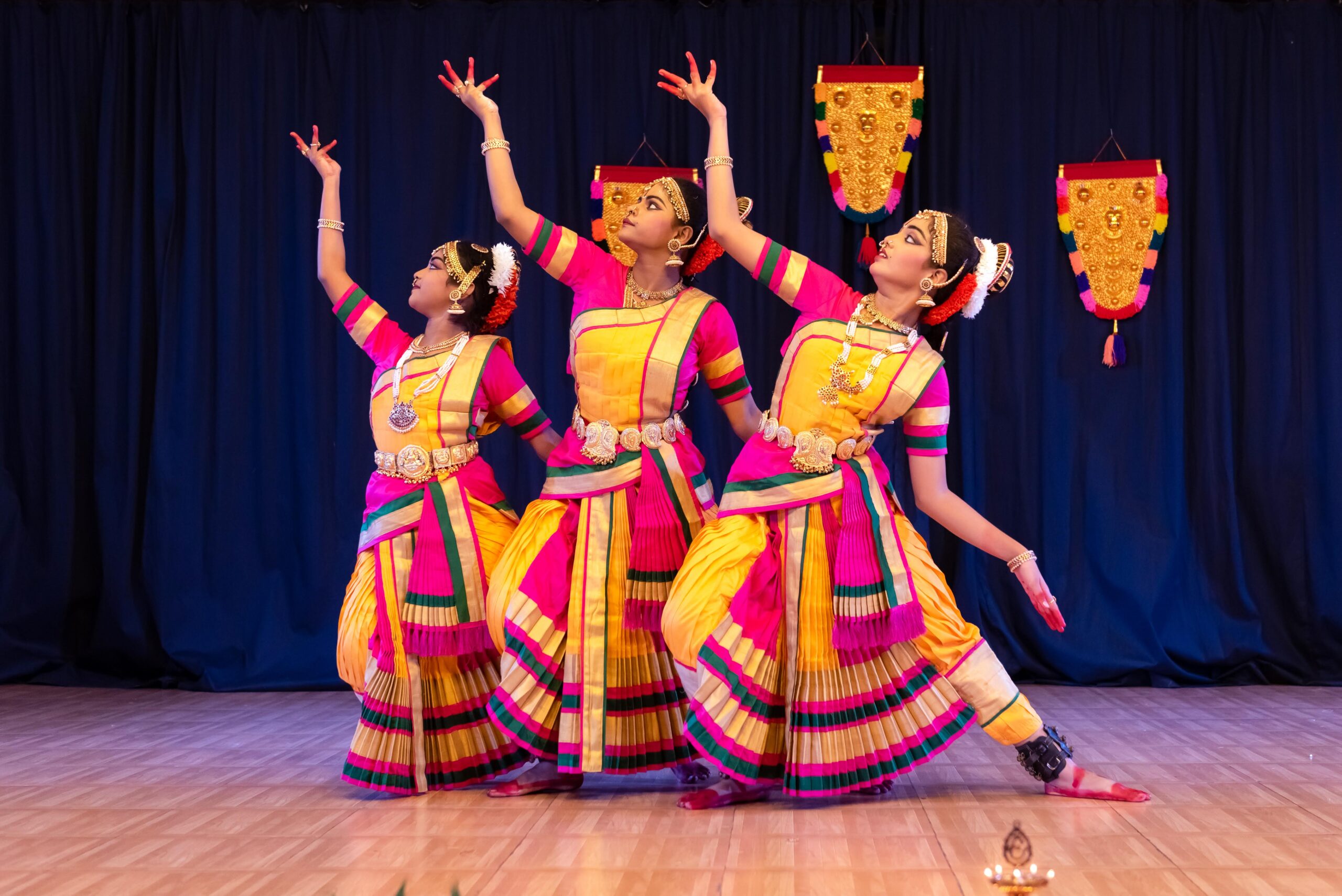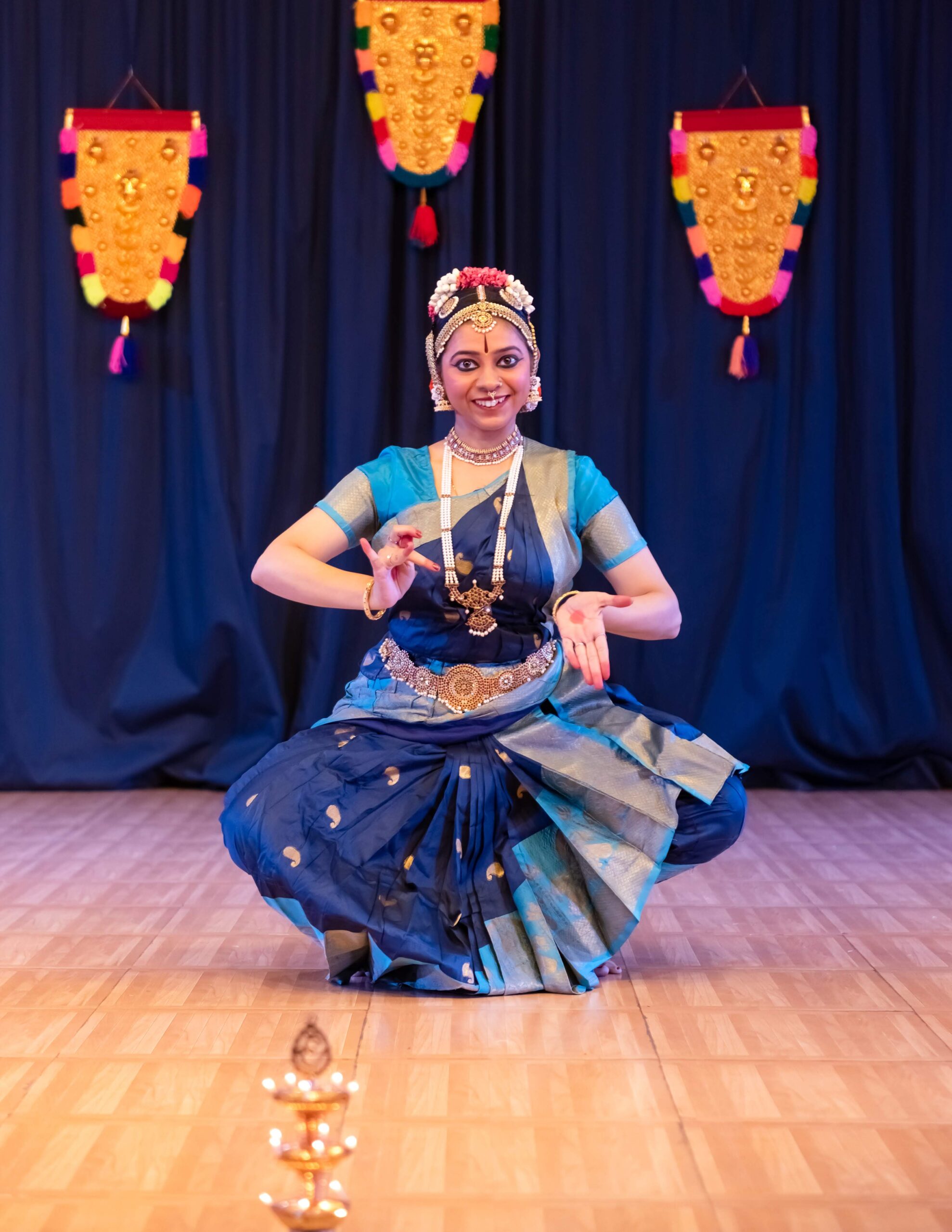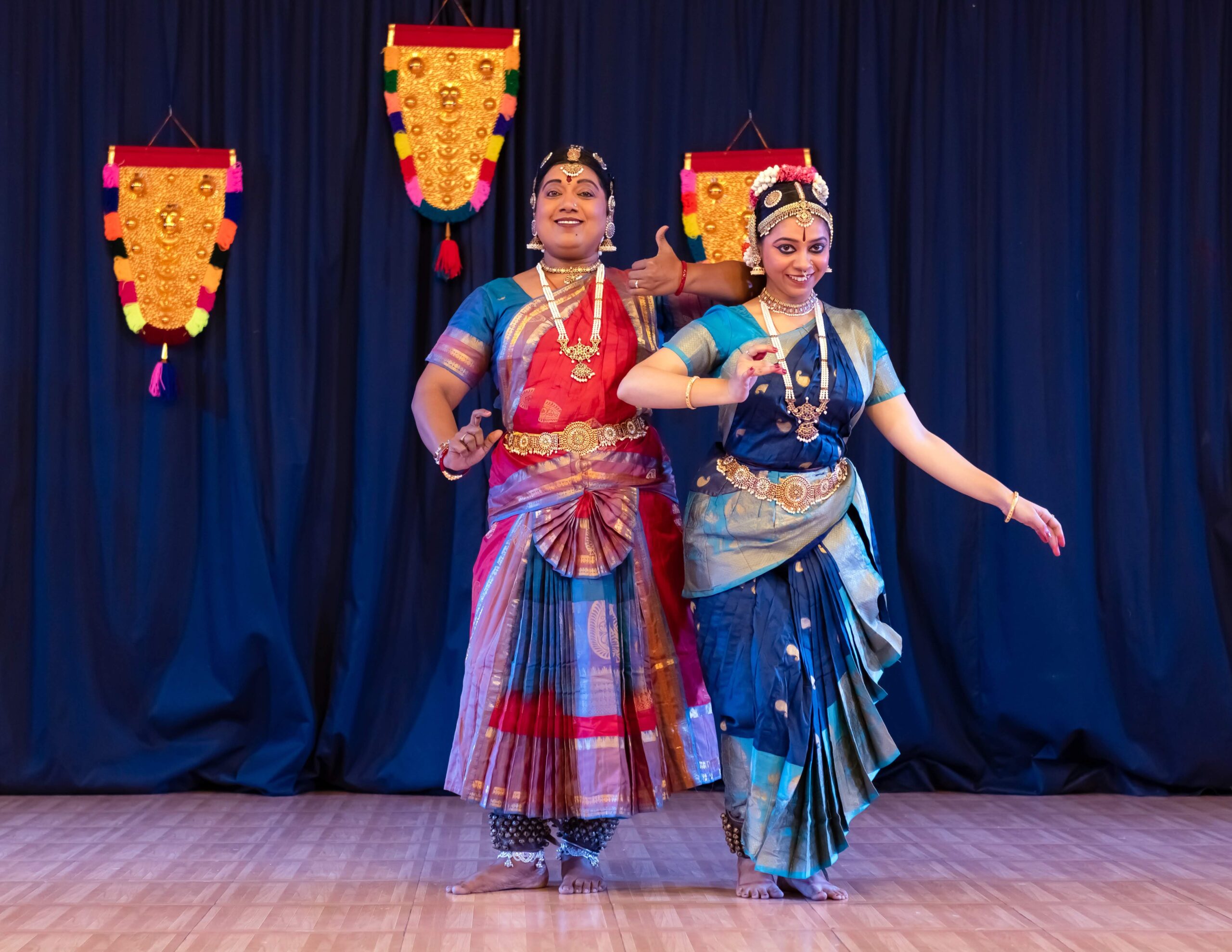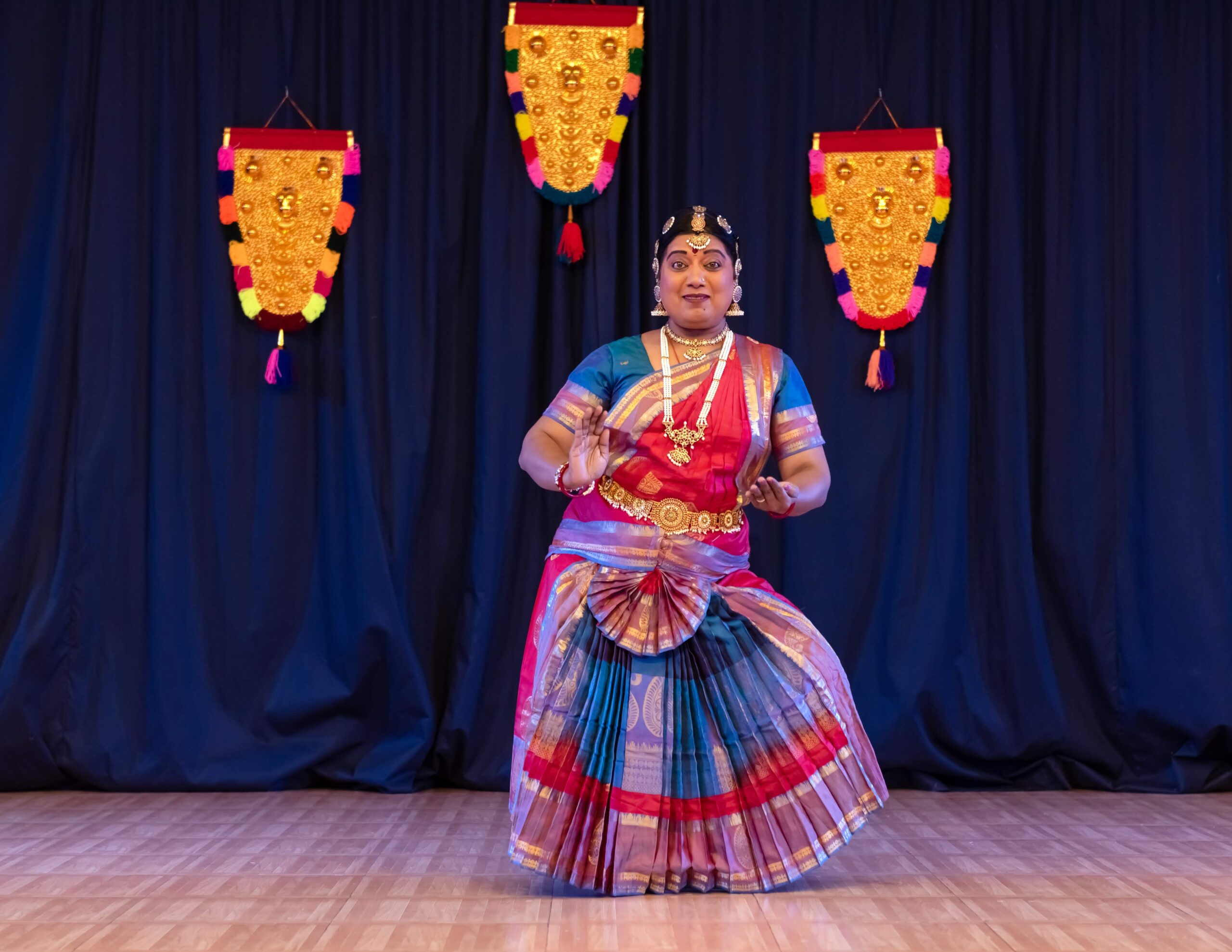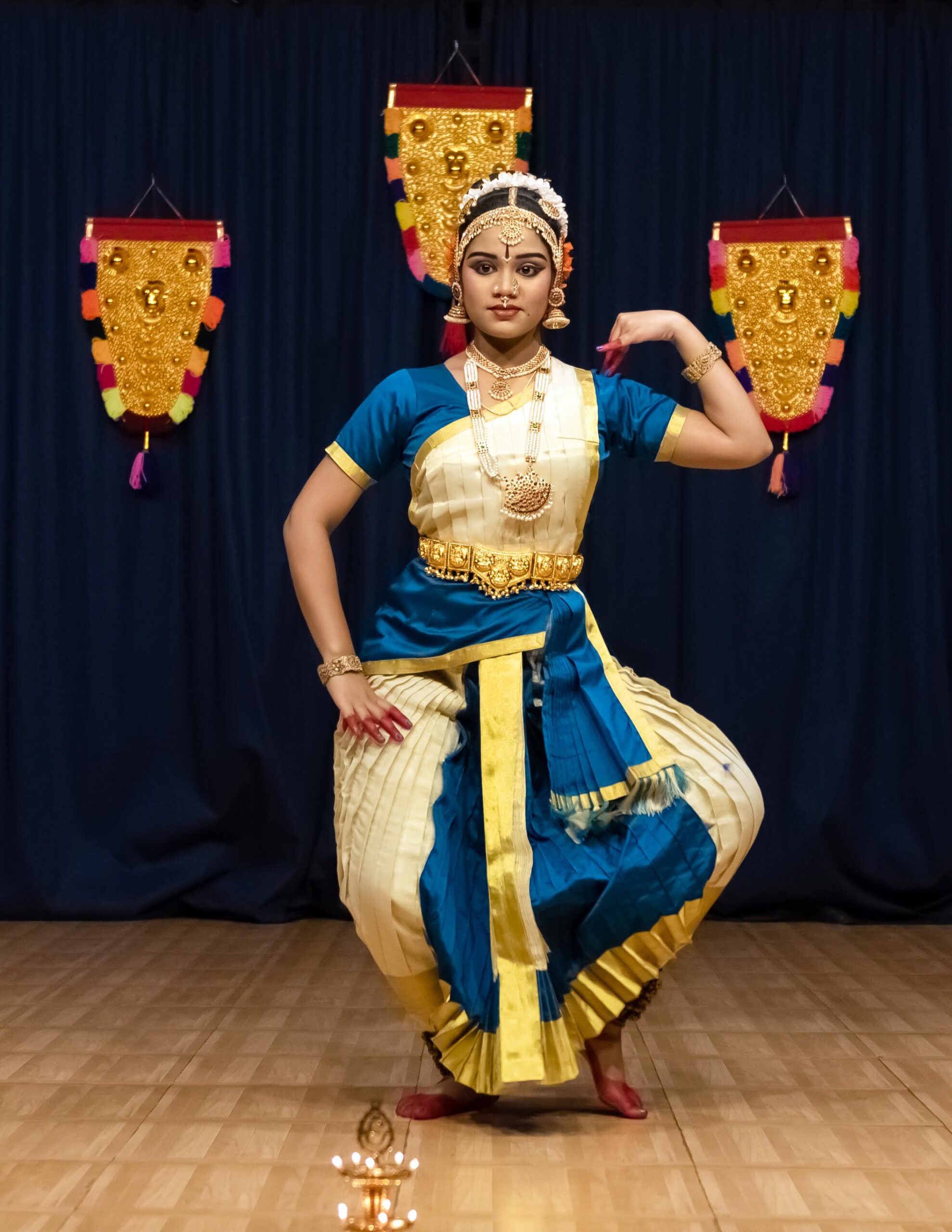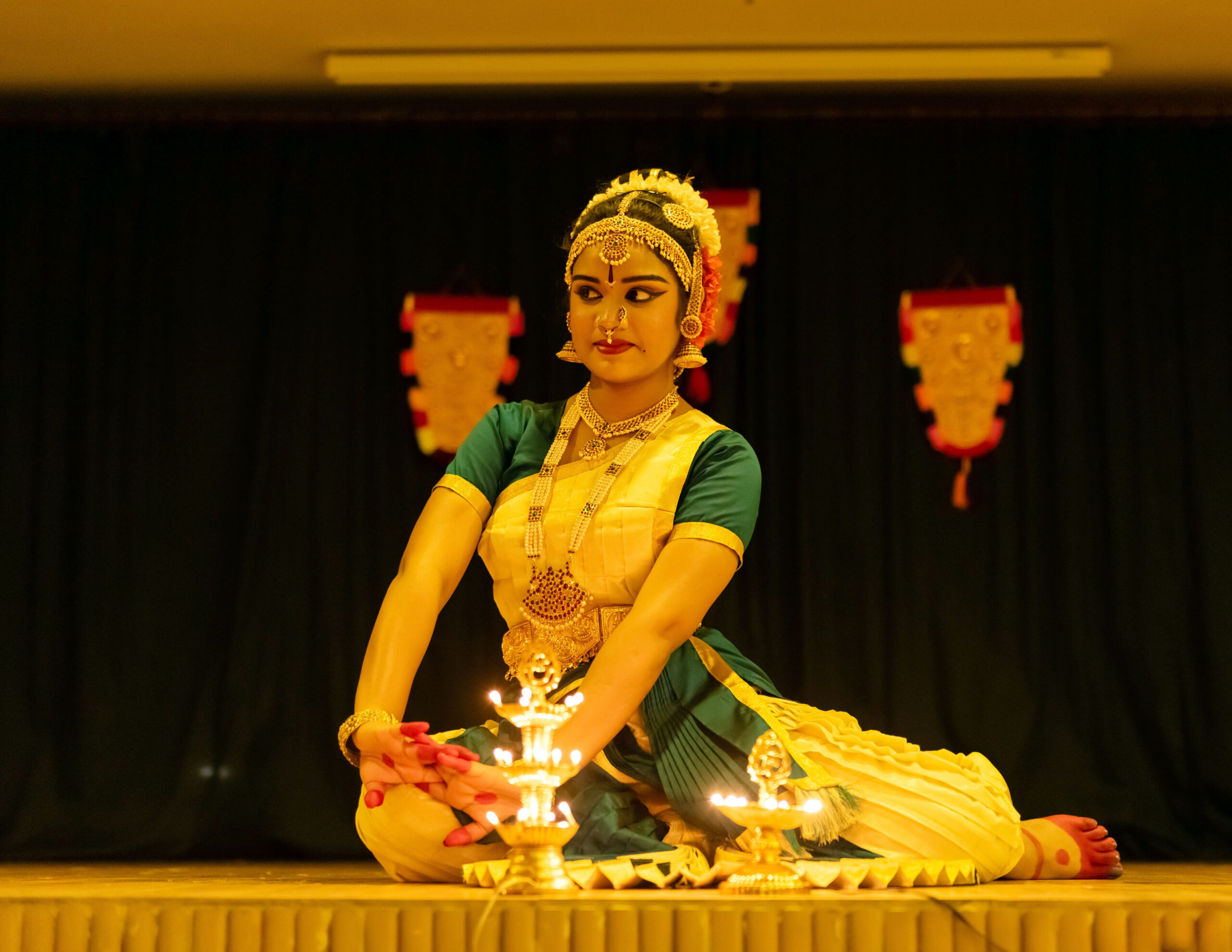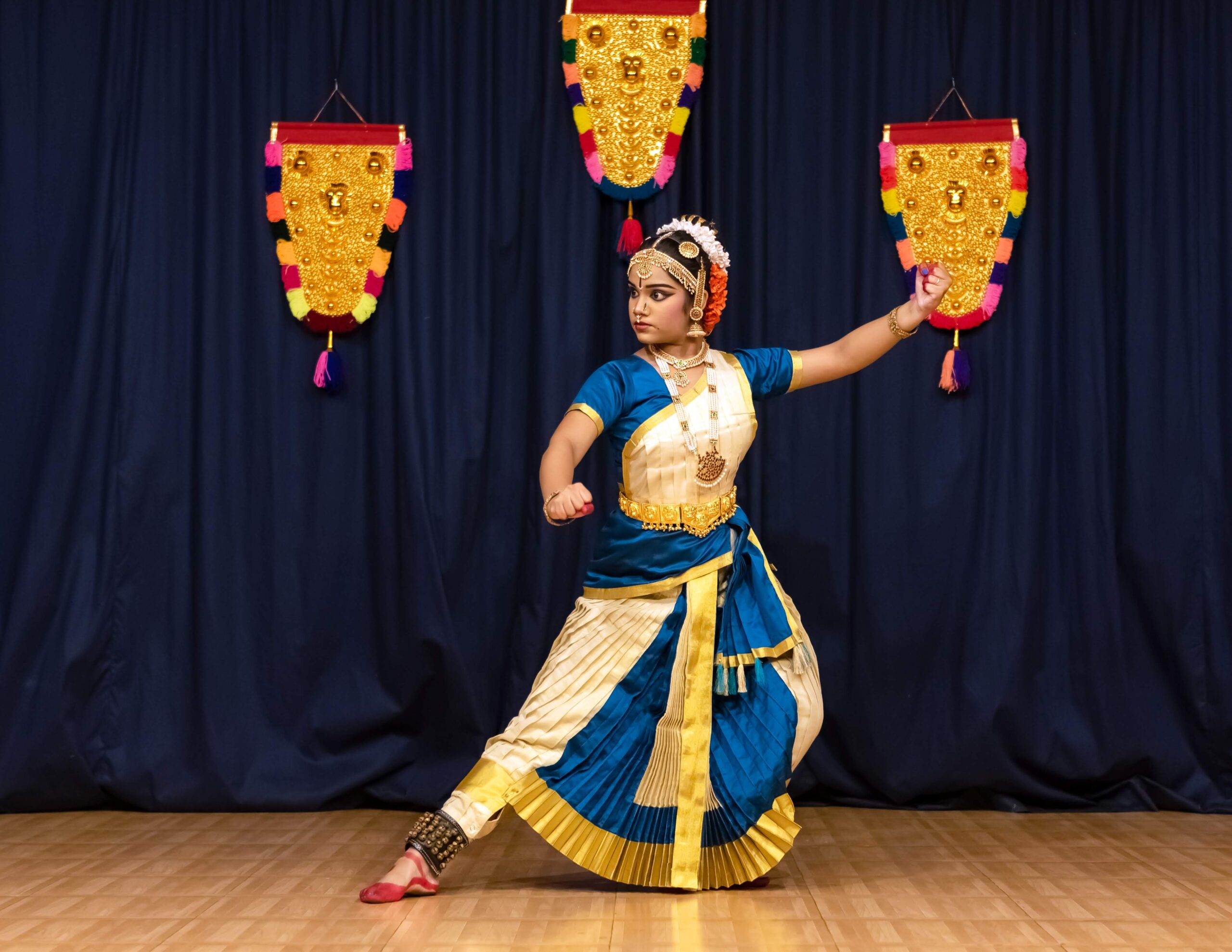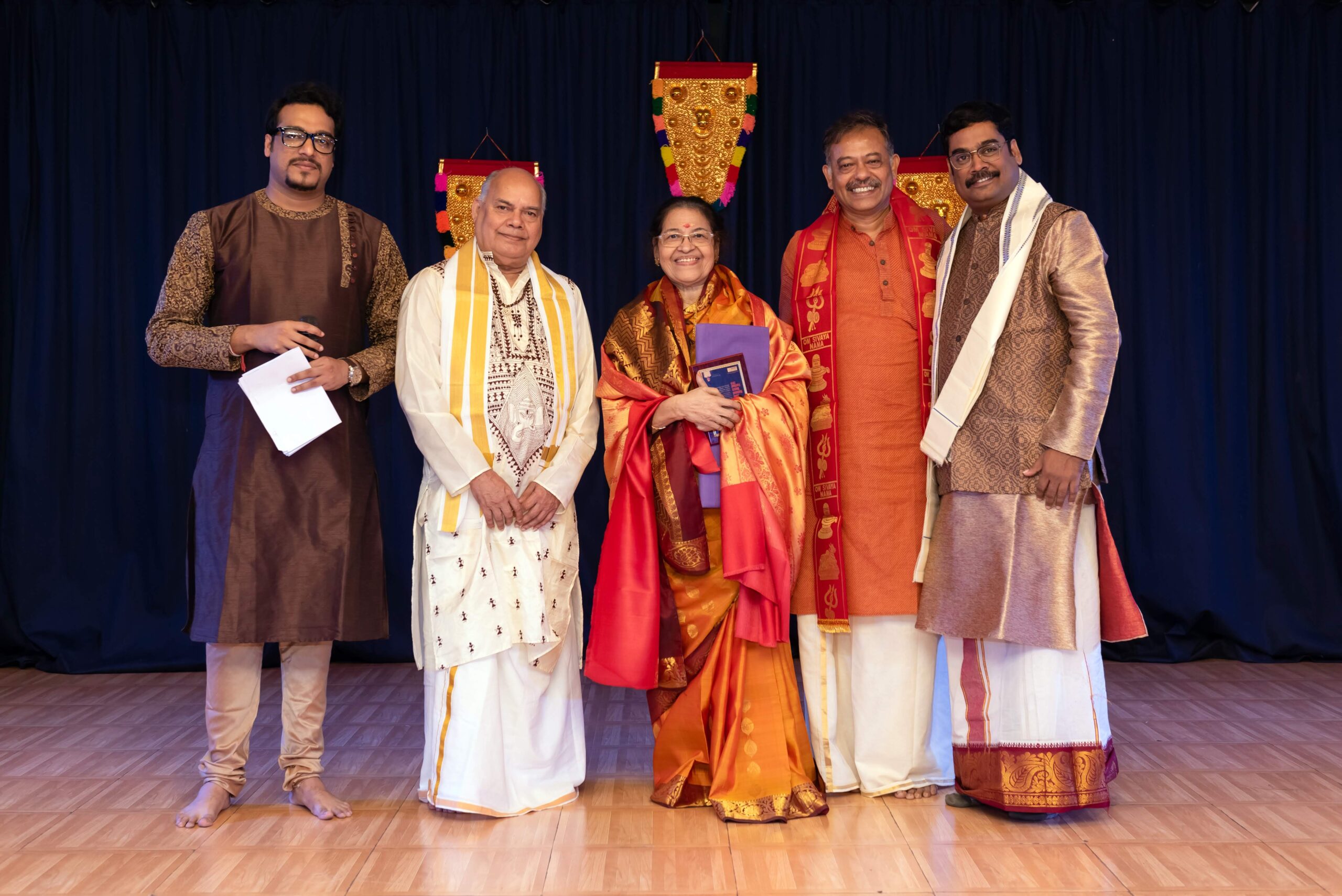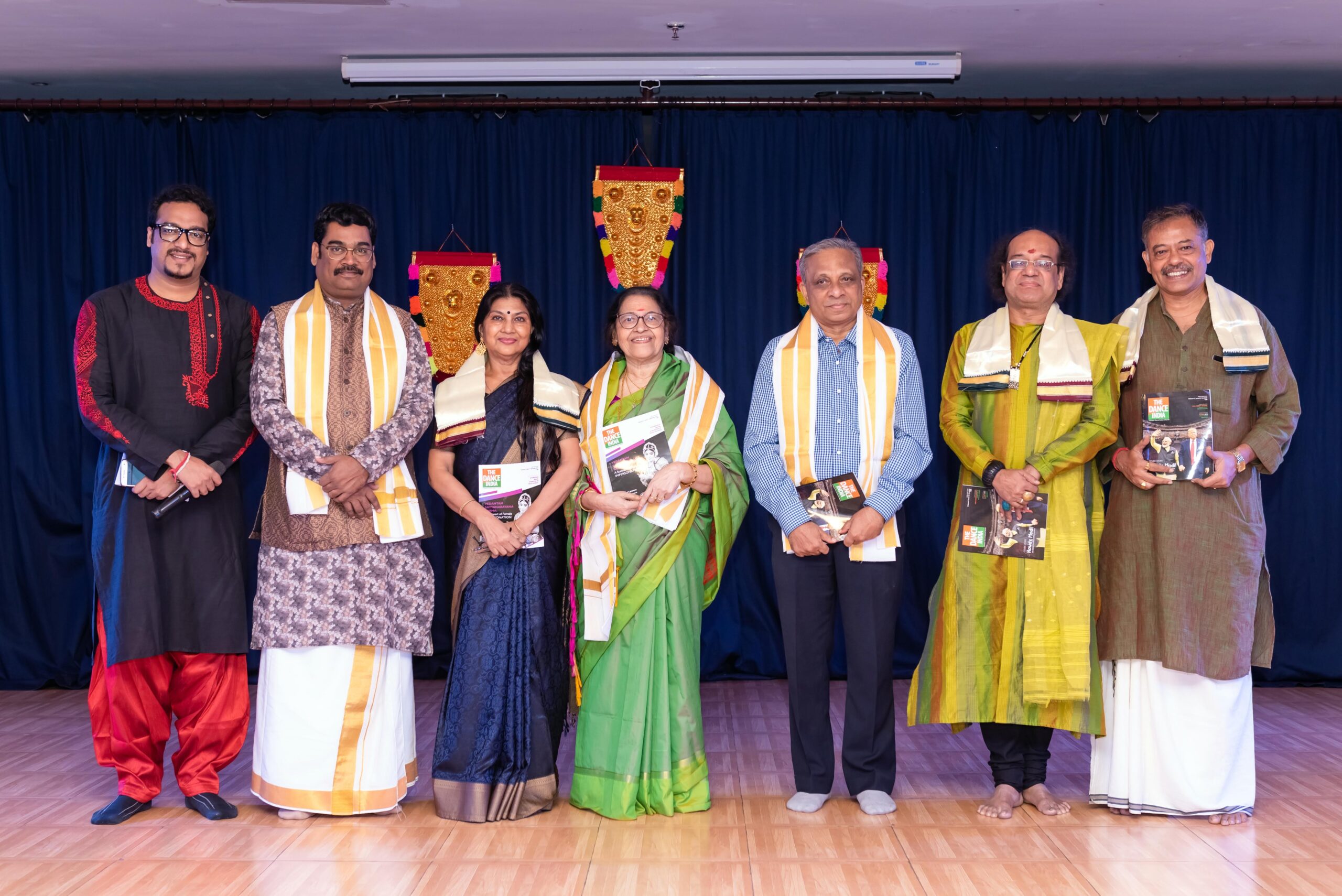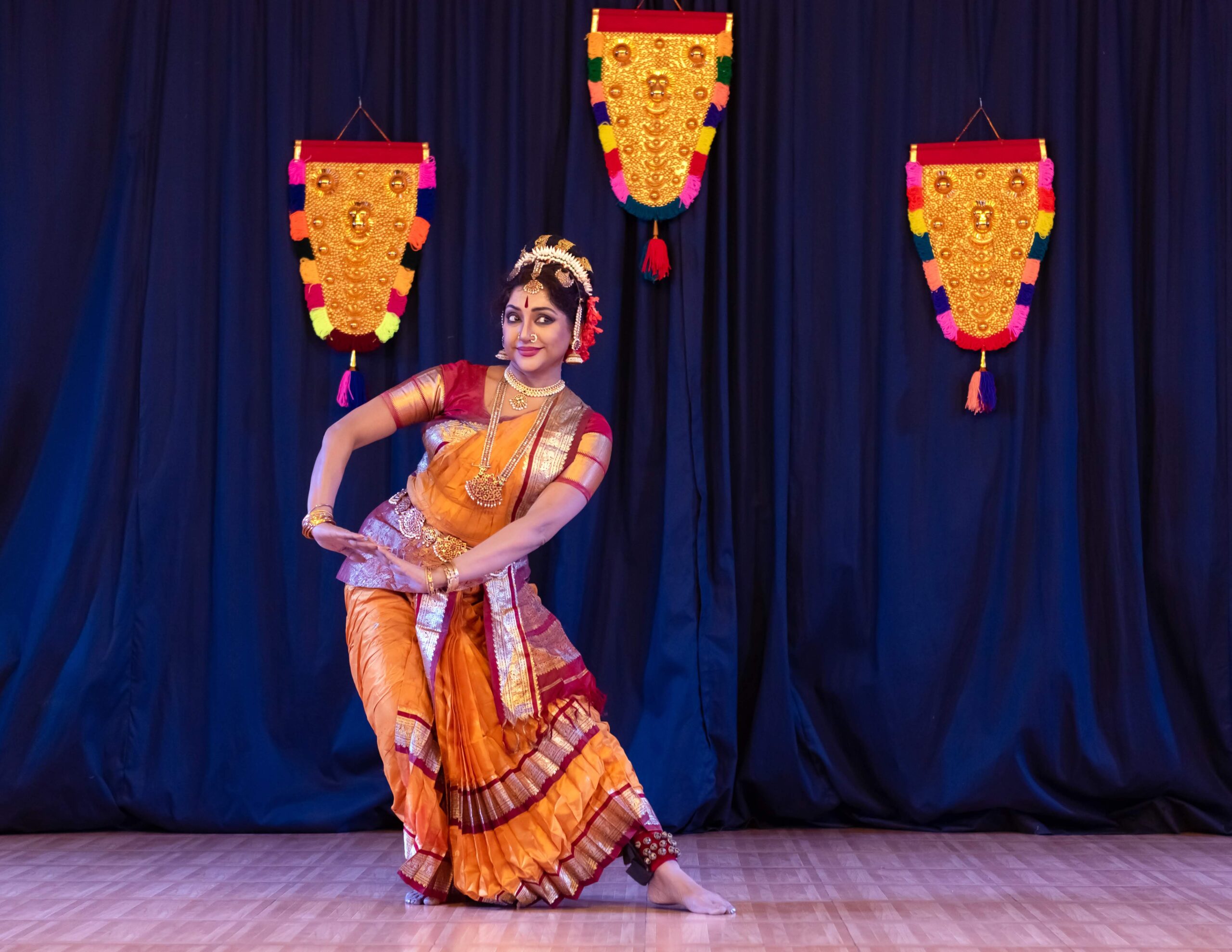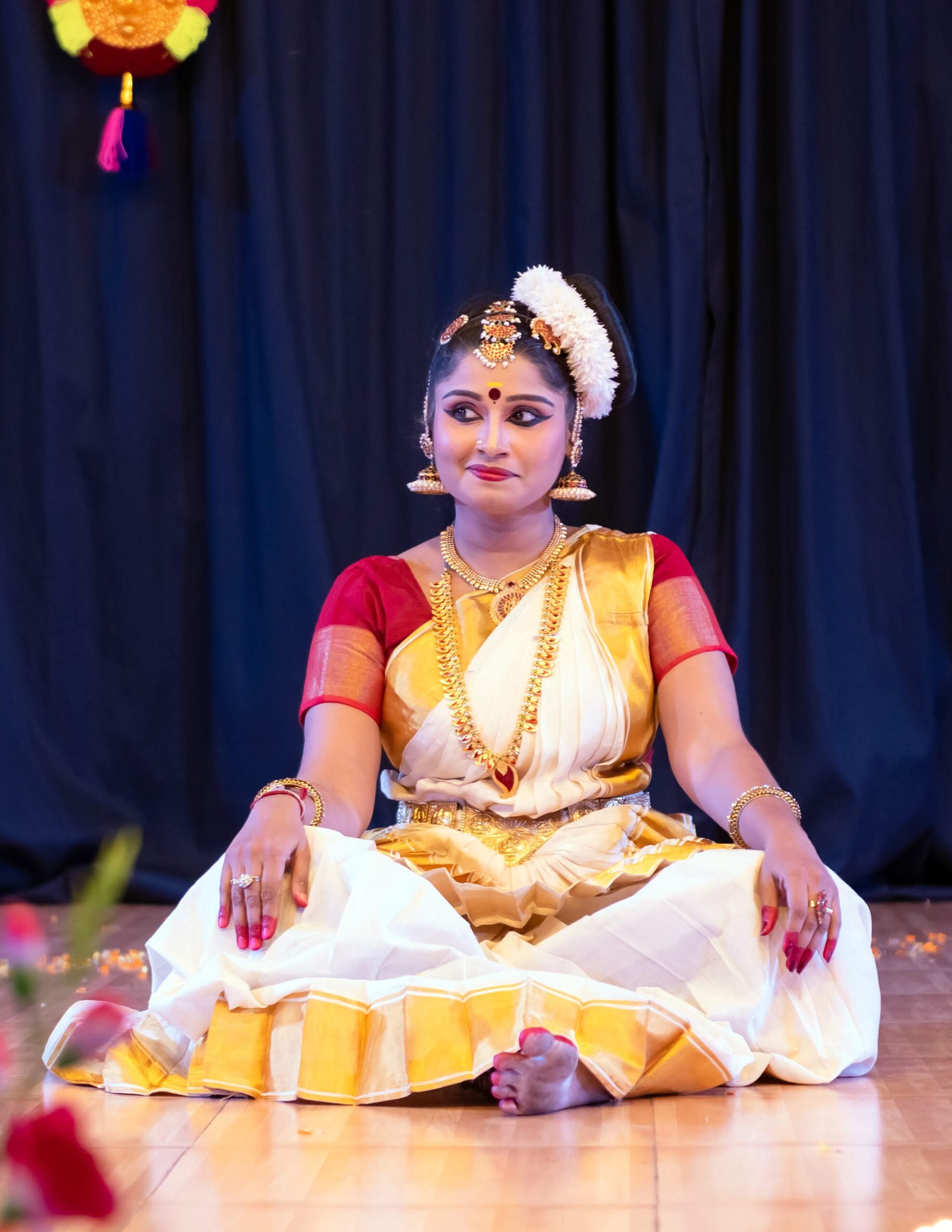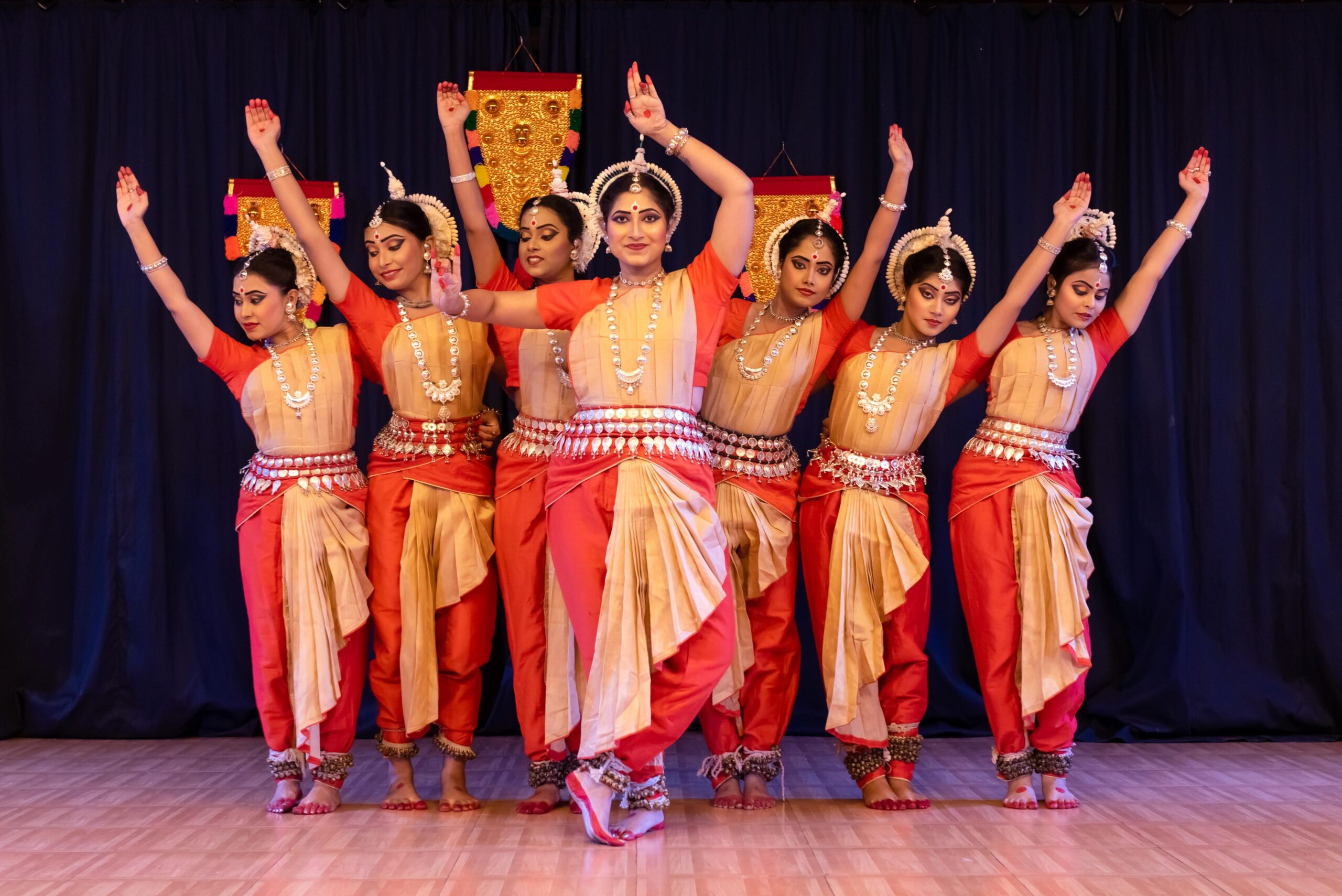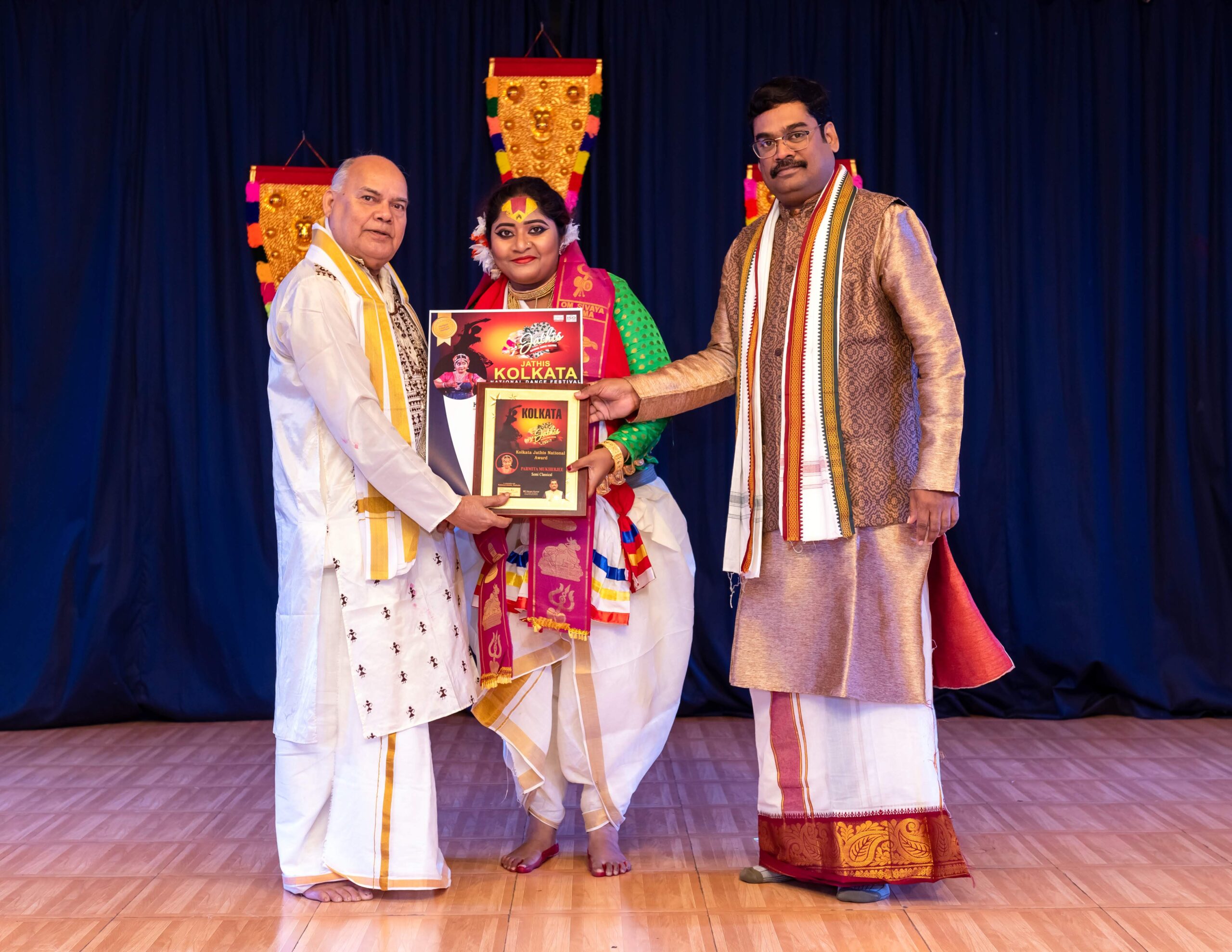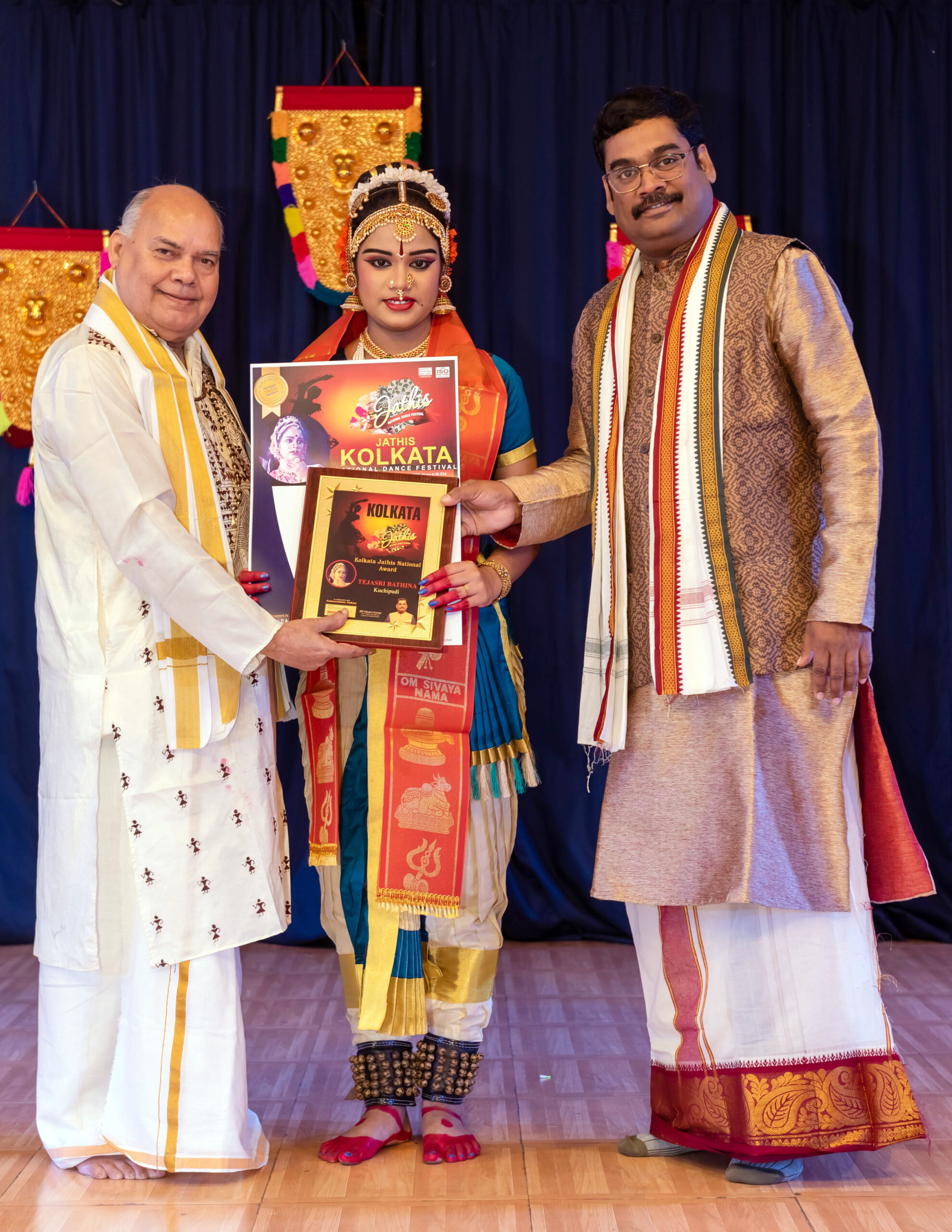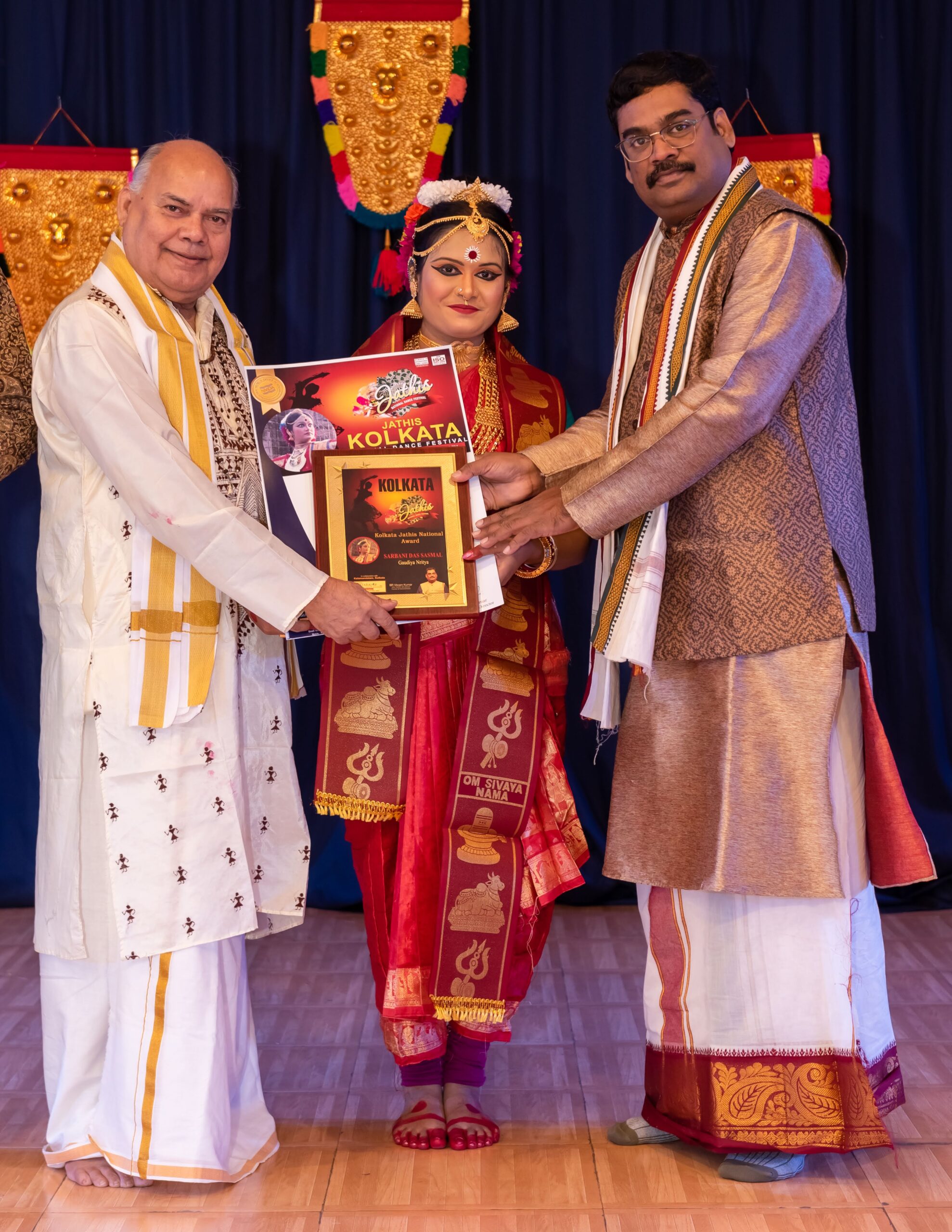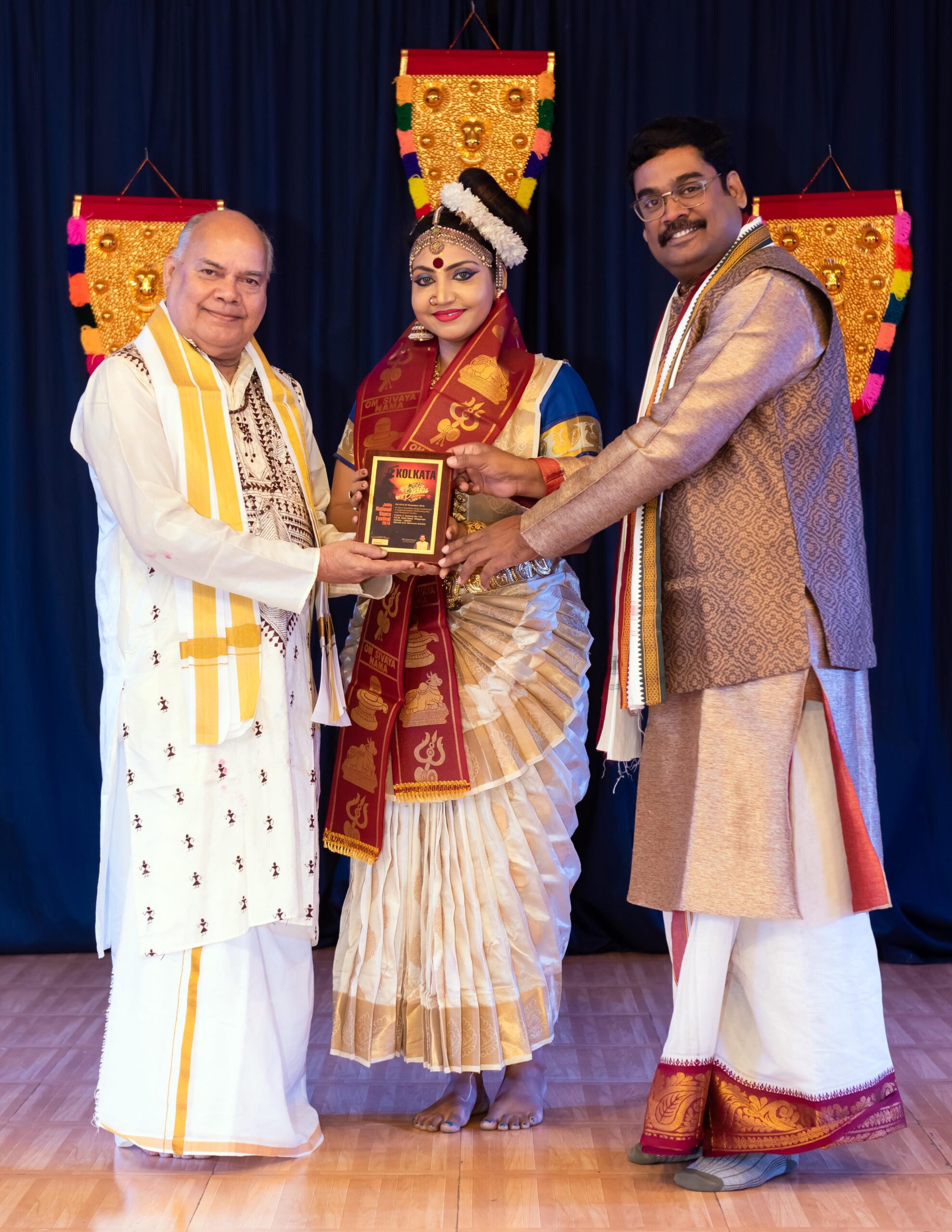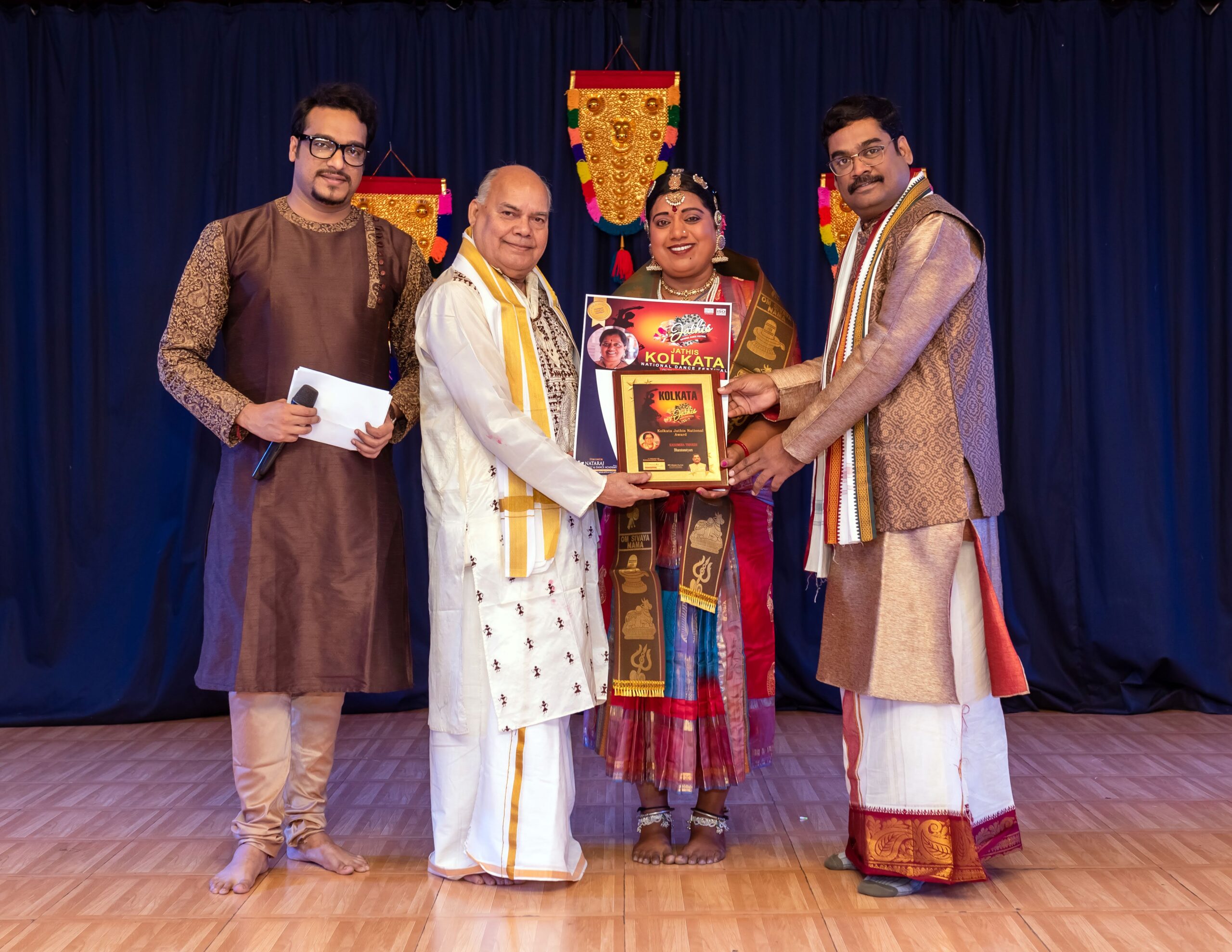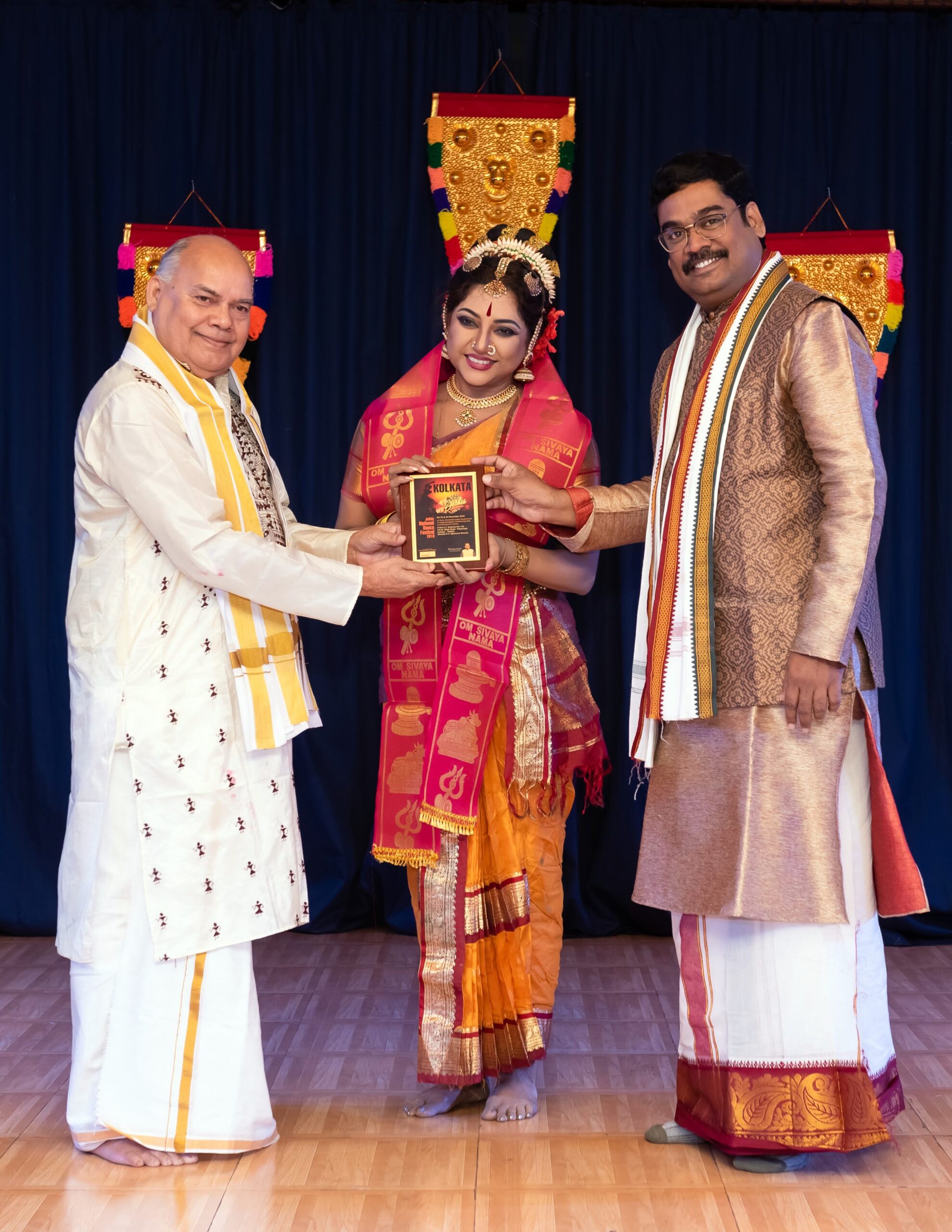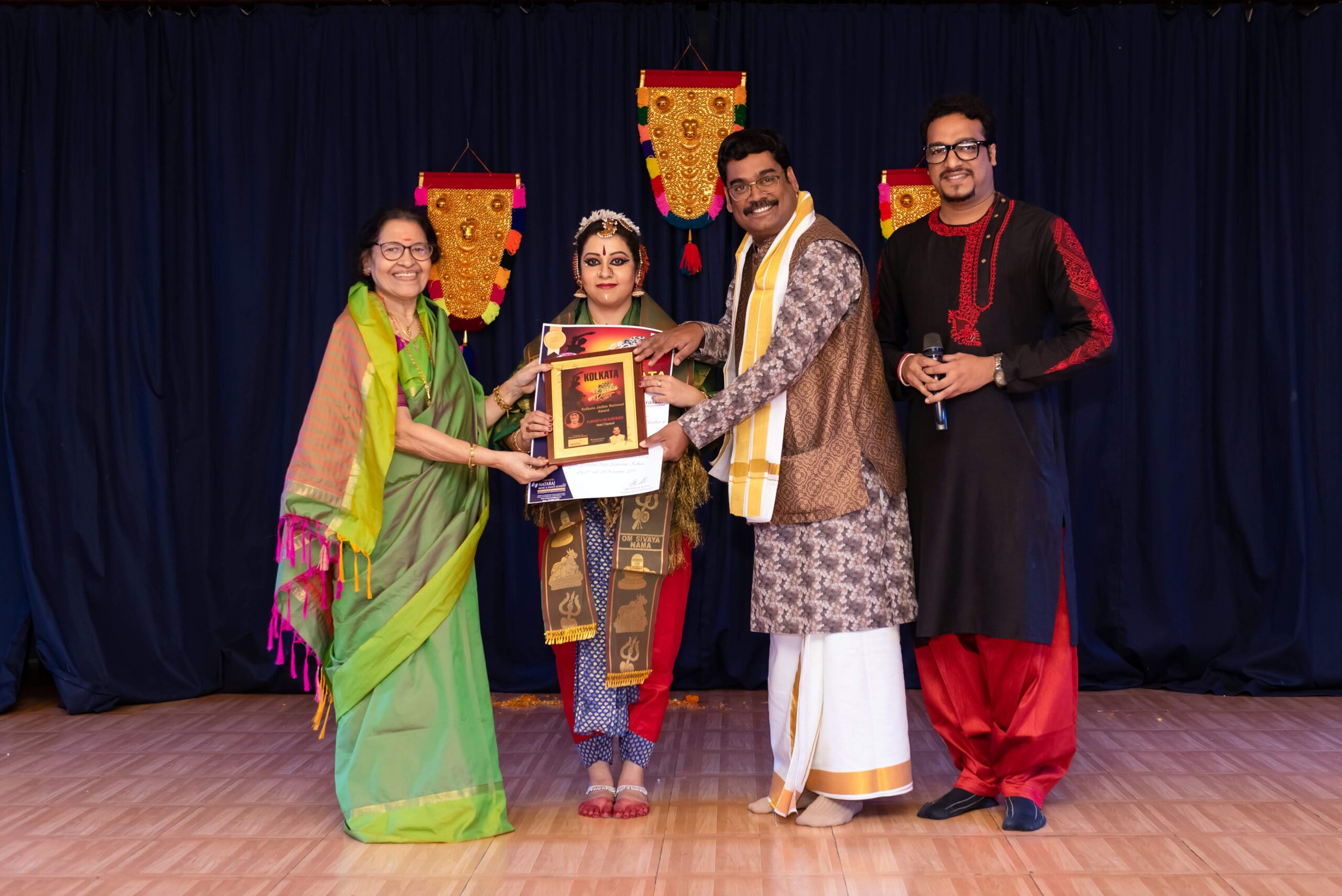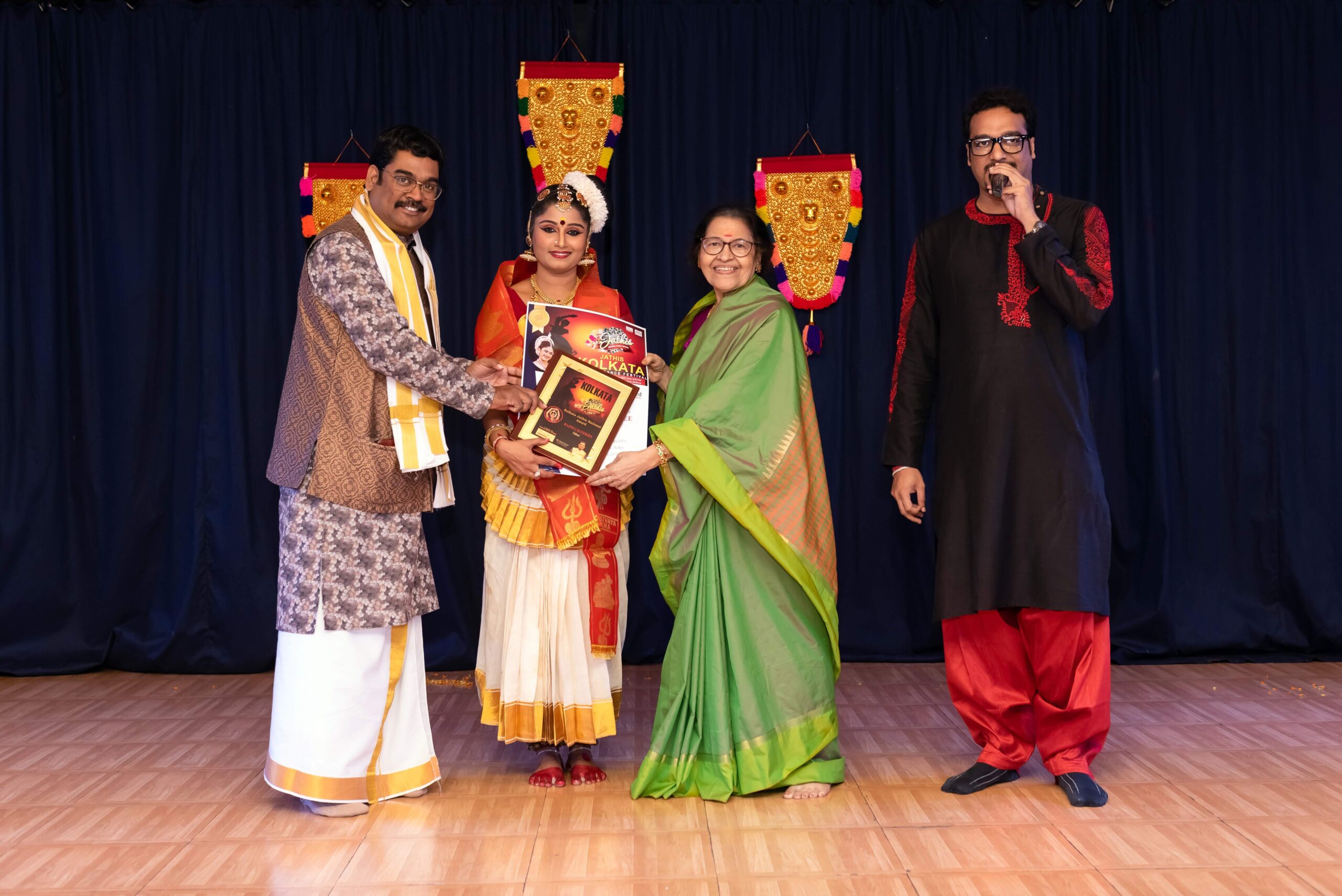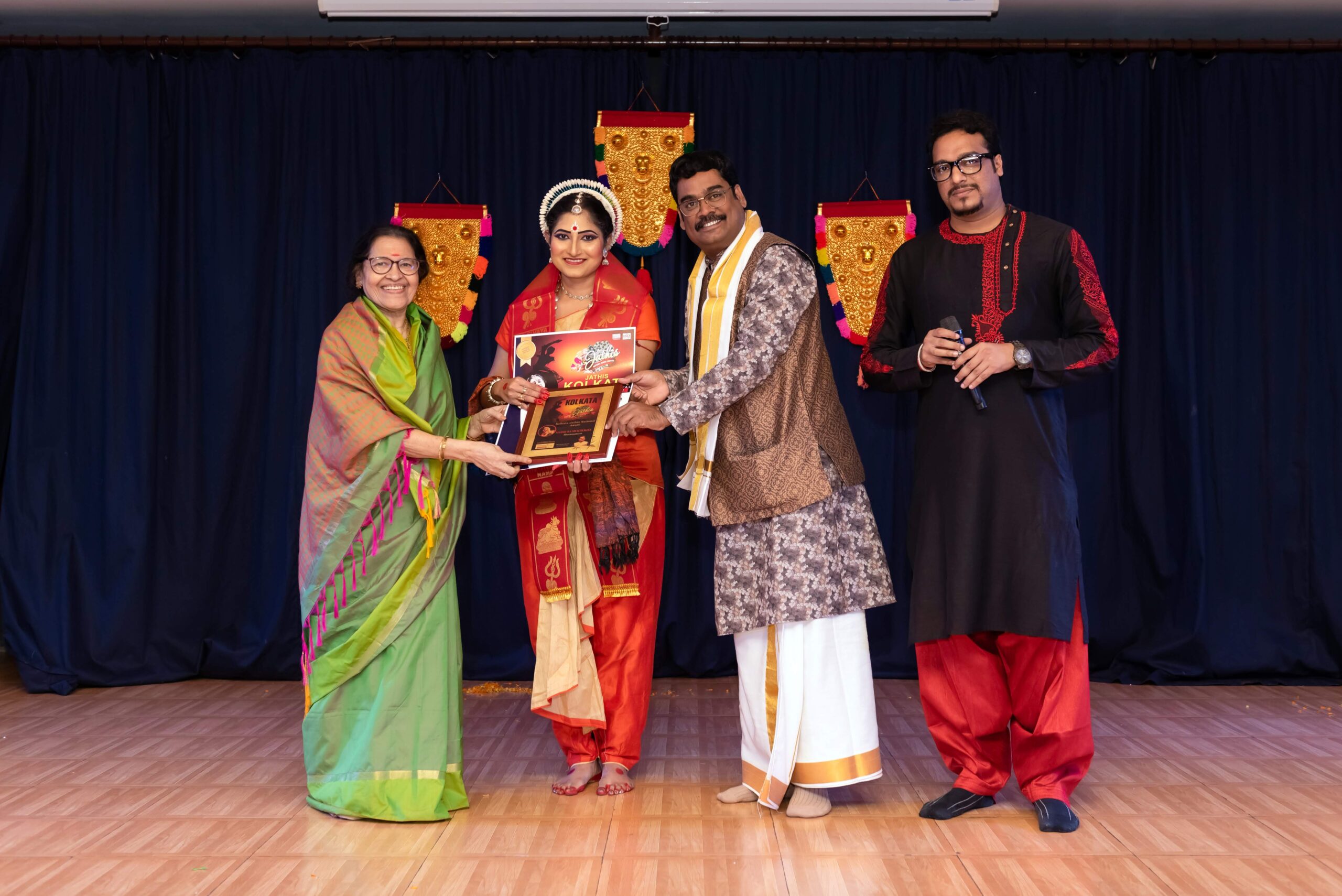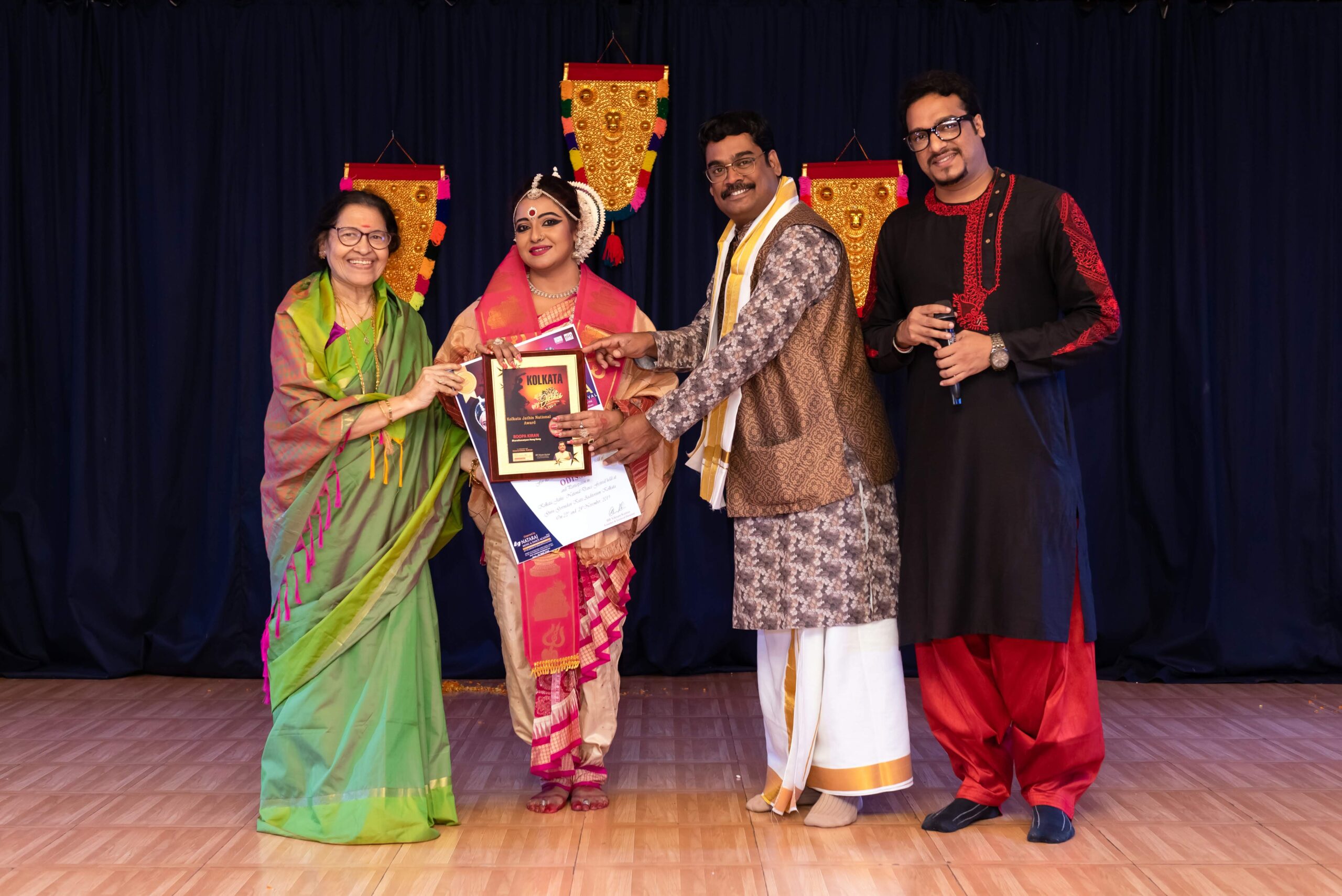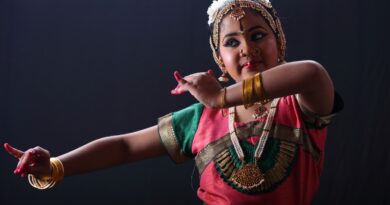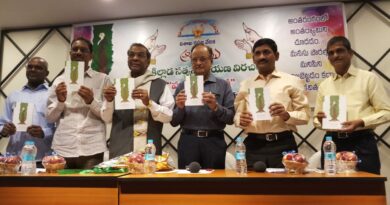Jathis Kolkata, Indian Dance Festival
Text: Dr Nita Vidyarthi, Cultural Critic Pics: Paul Nicodemus
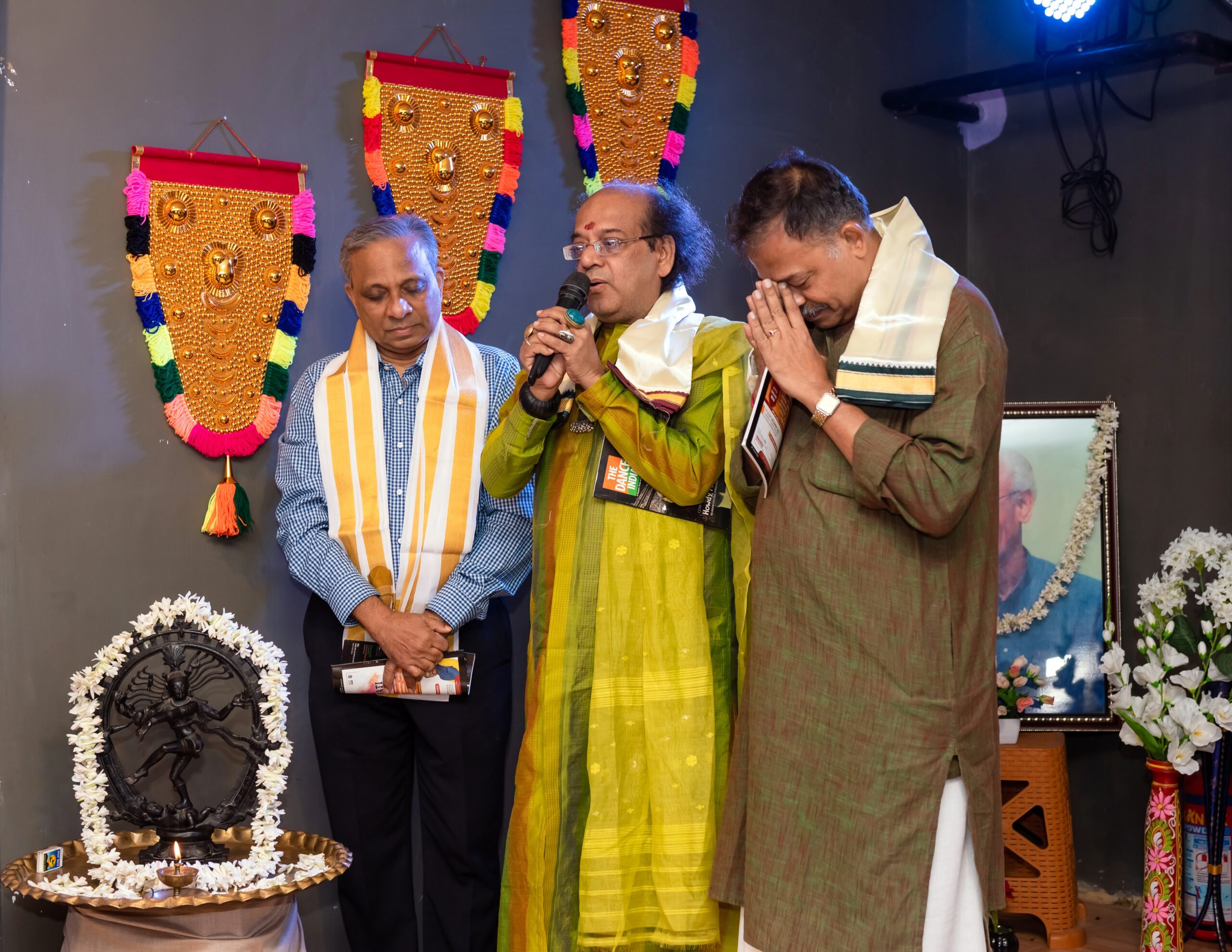
It was a privilege to have the prestigious institution Nataraj Music and Dance Academy, (NMDA) Visakhapatnam, spearheaded by the renowned arts personality BR Vikram Kumar, to open the Kolkata chapter of the Jathis National Festival on November 23, 2019, at the Guru Govindan Kutty Auditorium in collaboration with the premier institution, Kalamandalam Kolkata. The two-day festival opened opportunities for not only the city-based dancers, especially the new talents, but also for those of the districts and the neighbouring states to showcase their training and abilities. The audience had the advantage of watching some brilliant performances by well-known seniors, juniors as well as groups.
It was a fine gesture on the part of NMDA to honour four city-based acclaimed dancers, SNA awardee Aloka Kanungo (Odissi), Asimbandhu Bhattacharya (Kathak) on the first day and SNA awardees Priti Patel (Manipuri) and Dr. Malabika Mitra (Kathak) on the second with the “Jathis Kolkata, Lifetime Achievement Awards”.
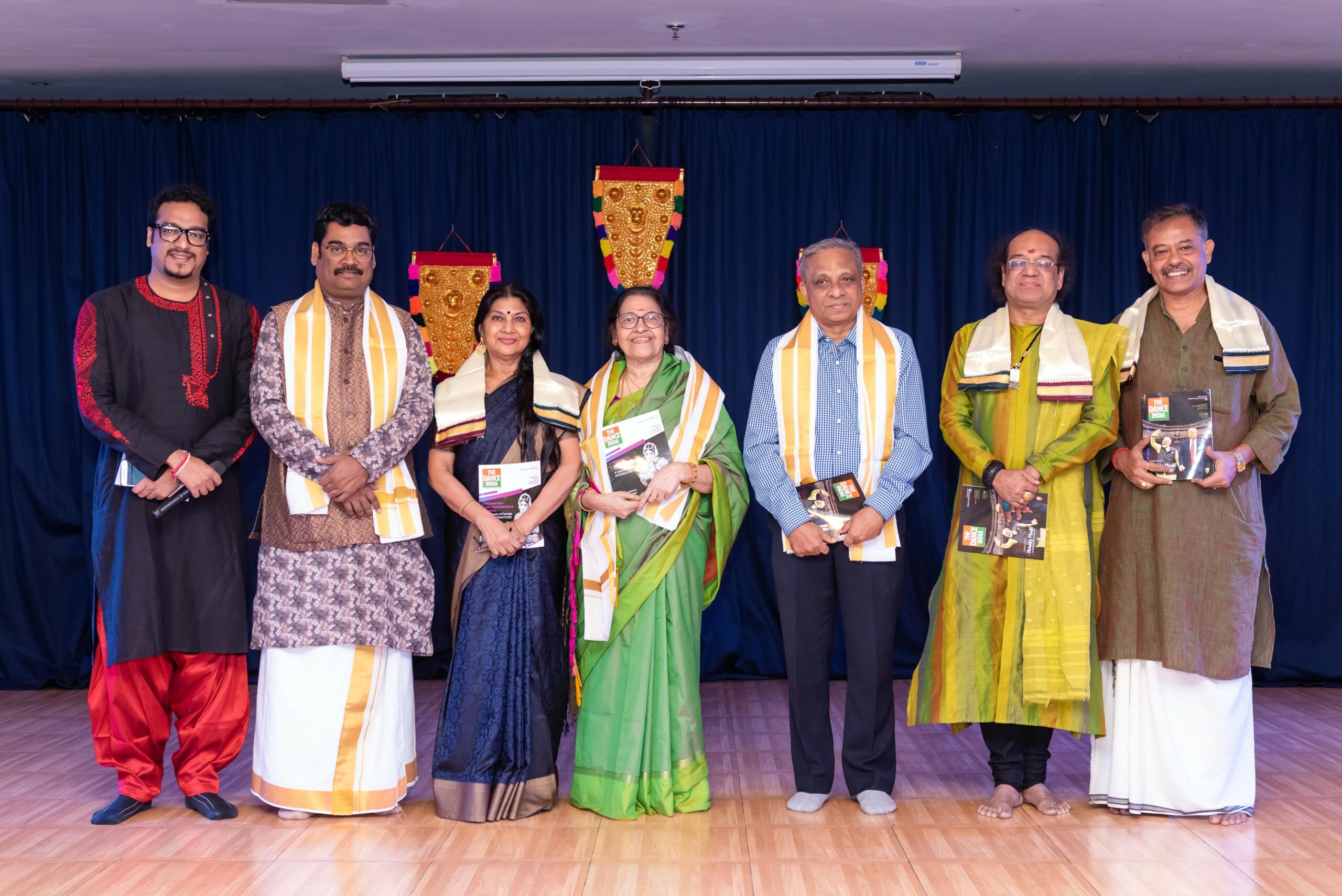
Guru Dr Thankamani Kutty inaugurated the festival with the lighting of the lamp and offering of flowers to the deity of Lord Nataraj, and on the photographs of Gurus Vallathol Narayanan Menon and Govindan Kutty, placed on the right-hand corner of the stage. After the welcome note by Guru Thankamani, the introduction by Sri Vikram Kumar and the invocatory song by Sukumar G Kutty, the evening of performances began with a well-rehearsed riveting pure dance item “Pancha Nadai” by the senior dancers of Kalamandalam Kolkata, based on different talas, jatis, Carnatic ragas, slokas and compositions by different Kavis, choreographed by Guru Thankamani Kutty. The brilliant rendition by ten confident dancers was well-conceived and displayed a series of celebratory, dynamic some fast-paced Bharatanatyam choreography like Ganesh Vandana (Uma Sutam) Shantakaram and ‘Yada Yadahi Dharmasya’ proving that their training by the stalwart was surely exclusive. Their crisp execution was in full sync with the rhythm of Shankar Narayanaswamy’s mridangam, Nattuvangam by the exponent Mohan G Kutty with mellifluous vocal support by Sukumar G Kutty, under the watchful eyes of their acclaimed guru.
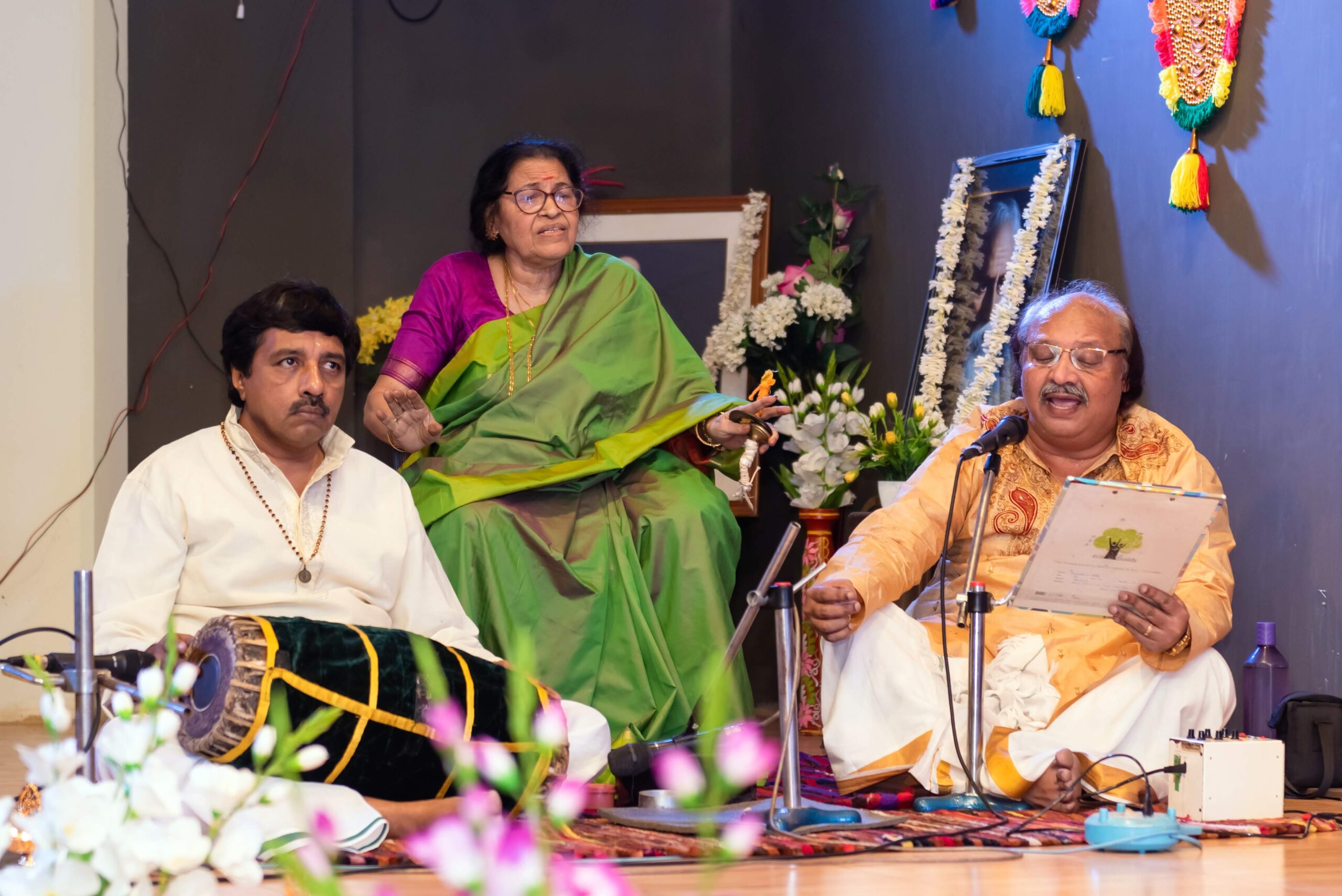
With an amalgam of solid training, grace and fine sense of rhythm, the next item was an Odissi solo by city-based well-known Odissi dancer Shayomita Dasgupta. She began by weaving intricate patterns with the mardala rhythm confidently in the pure dance item Pallavi, set to raga Pattadeep and tala Jati. This was followed by the popular Odia abhinaya ‘Brajaku Choro’ (Thief of Brajadham) written by Bhakta Kavi Bhaktacharan Das, which illustrates Yashoda trying to put baby Krishna to sleep by describing to him how a thief steals children who don’t sleep. Choreographed by Guru Kelucharan Mohapatra, with Pandit Bhubaneswar Mishra’s music set to raga Anandabhairavi tala Jati, Shayomita impressed by bringing forth the Vatsalya rasa with the style of the choreographer delightfully. Her white sari with the shocking pink border added to the dignity of the performance.
It was good to watch ‘Navarasa’ by seasoned dancer Srija R Krishnan in the traditional format of Mohiniattam set to raga Malika, tala Malika, – ‘the lullaby’ composed by Irayimmam Tampi offered the dancer ample scope for abhinaya to highlight Vatsalya rasa which the dancer exploited fully.
Dancers of Chhandamanjari Kolkata, guided by Odissi dancer Rajnita Banerjee gave a fine performance on the selected episodes from the life of Krishna ending in an attractive formation.
The evening concluded with a number set to the songs of Rabindranath Tagore by Madhura Mukherjee and her group embracing the Bharatanatyam idiom but the presentation did not rise above mediocrity.
The second evening saw the best solo performances of the festival and was inaugurated by none other than the acclaimed Kathakali maestro T Shankaranarayan. Kalamandalam Swarnadeepa, a very fine Mohiniattam dancer, began with a self-choreographed Ganesh Stuti in Ragamalika, Talamalika, painting every lyric with picturesque movements, graceful, measured sways and body inflexions suited to a consummate dancer. Her Jayadeva Ashtapadi ‘Lalita Labangalata’ appealed for the fluid movements in raga-tala Malika.
Malabika Sen, the principal dancer of Kalamandalam, is endowed with an impressive stage presence and sculpturesque deport and has performed widely at home and abroad. The remarkable performer that she is came forth in her Kuchipudi solo ‘Krishna Shabdam’. In the expressional piece based on Sabda (word) Malabika performed to the song ‘Ra Ra Yadubangsham Sudhambudhi Chandra swami…’ bridging evocative and impassioned abhinaya with exquisite pure dance while displaying sequences like arranging paan (Betel Leaves) for Lord Krishna, preparing sandal paste to anoint him and pleading him to rush to her. The piece was choreographed with a wide variety of movements of the body which were executed to perfection by Malabika. A rewarding performance indeed!
The young dancers Roopa Gayatri, Siri Varshini and Chetana of NMDA brought in joy and delight with the all-time favourite Kuchipudi number “Choodaramma Satulala”. The three well-trained girls danced in full coordination with the lilting Annamacharya keerthanalu in Ragamalika, tala Adi, choreographed by KV Lakshmi. The group brought out the lyrics through vivid movements describing the Godadevi, who is also known as Alamelumanga, Mahalaxmi and others.
Bharatanatyam dancer Kashmira Trivedi from Thane, Maharashtra, is a very senior and seasoned dancer, teacher, performer and choreographer. She has been honing her skills in abhinaya from Guru Deepak Mazumdar and Padma Bhushan recipient Dr Kanak Rele and also teaching the art form to challenged students. Together with her student Swati Badle, she presented selected episodes from the Ramayana set to the keerthanam ‘Ramchandra Kripalu Bhajman’ sung by Manoj Desai in her choreography. The music was by Satish Krishnamurthy who also supported on the mridangam. On the flute was Raghvan Trivedi. Kashmira’s evocative abhinaya in Seeta haran and as the dying Ravana attaining Moksha and also the dignified Ram in Seeta Swayambar and Swati as Jatayu were exhilarating moments of fine dancing and expressions.
Young Tejasri Bathina has emerged as a very fine dancer and a star performer and offered a rich treat of aesthetic pleasure portraying the individual words of the song with vivid imagery of body movements (hasta mudras) and expressions in her item ‘Maheshwari Mahakali’. Technically sound Tejashri lives up to her name of being a powerful dancer. Set to raga Shivaranjani, tala Misra Chapu, her depiction of Adi Shakti and Kalratri reflected the fitness and poise cultivated by the dancer. Abhinaya was controlled yet evocative in the Mahisasura Mardini Stotram ‘Aigiri Nandini’ — a captivating presentation that drew the spectators’ attention.
Paramita Mukherjee and her dancers of Aradhana Nritya Gurukul, from Mahishadal, East Midnapore, presented ‘Rabir Alo’ set to the songs of Tagore, embracing Bharatanatyam, Kathakali and Santiniketan Rabindrik but the presentation was amateurish.
A vibrant performance of Bengal’s Gaudiya Nritya was presented by Shivam Nrityalaya, Kolkata, under the leadership of Sarbani Das Sasmal. The first five of Jaideva’s Dasavatar, (ten incarnations of Lord Vishnu) was presented in Ragamala and tala Guchha.
The festival concluded with a neat and confident performance of Shivudu Paravasamuna Tandavamadatane (Thandavam) by the NMDA group in Ragamalika and tala Misra Chapu, choreographed by KV Lakshmi followed by the Mangalam by Sukumar Kutty. Somnath Kutty needs a mention for the meticulous arrangements.

